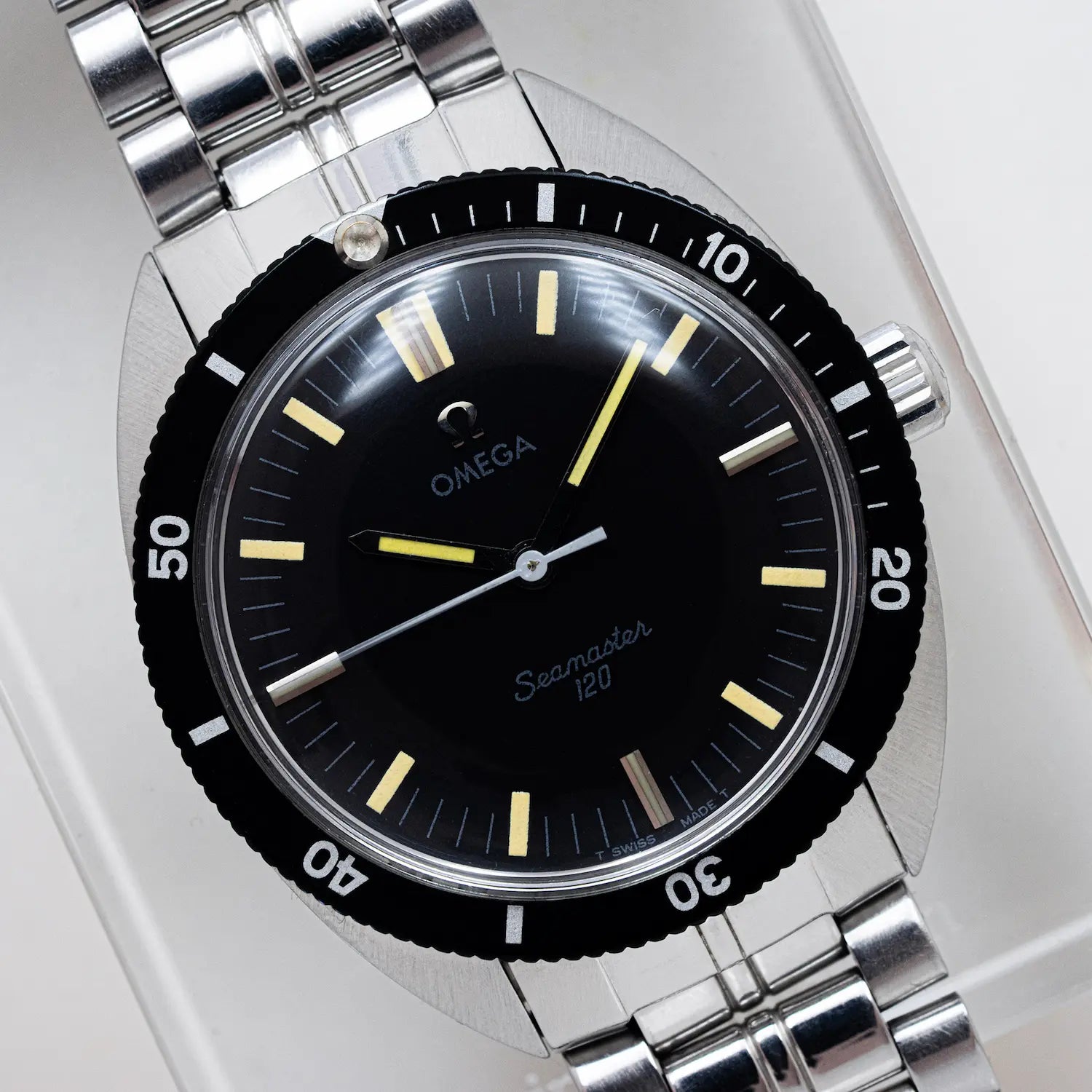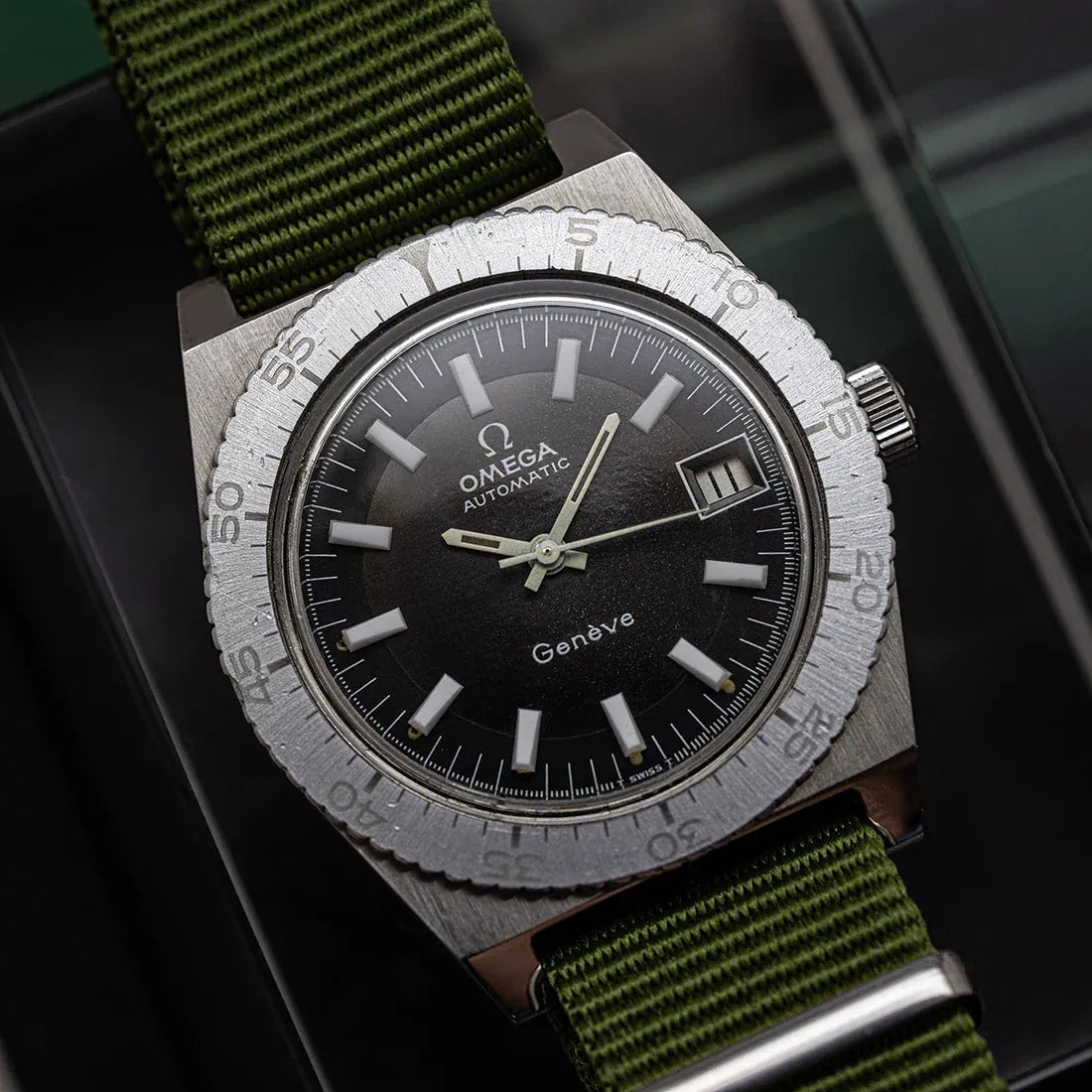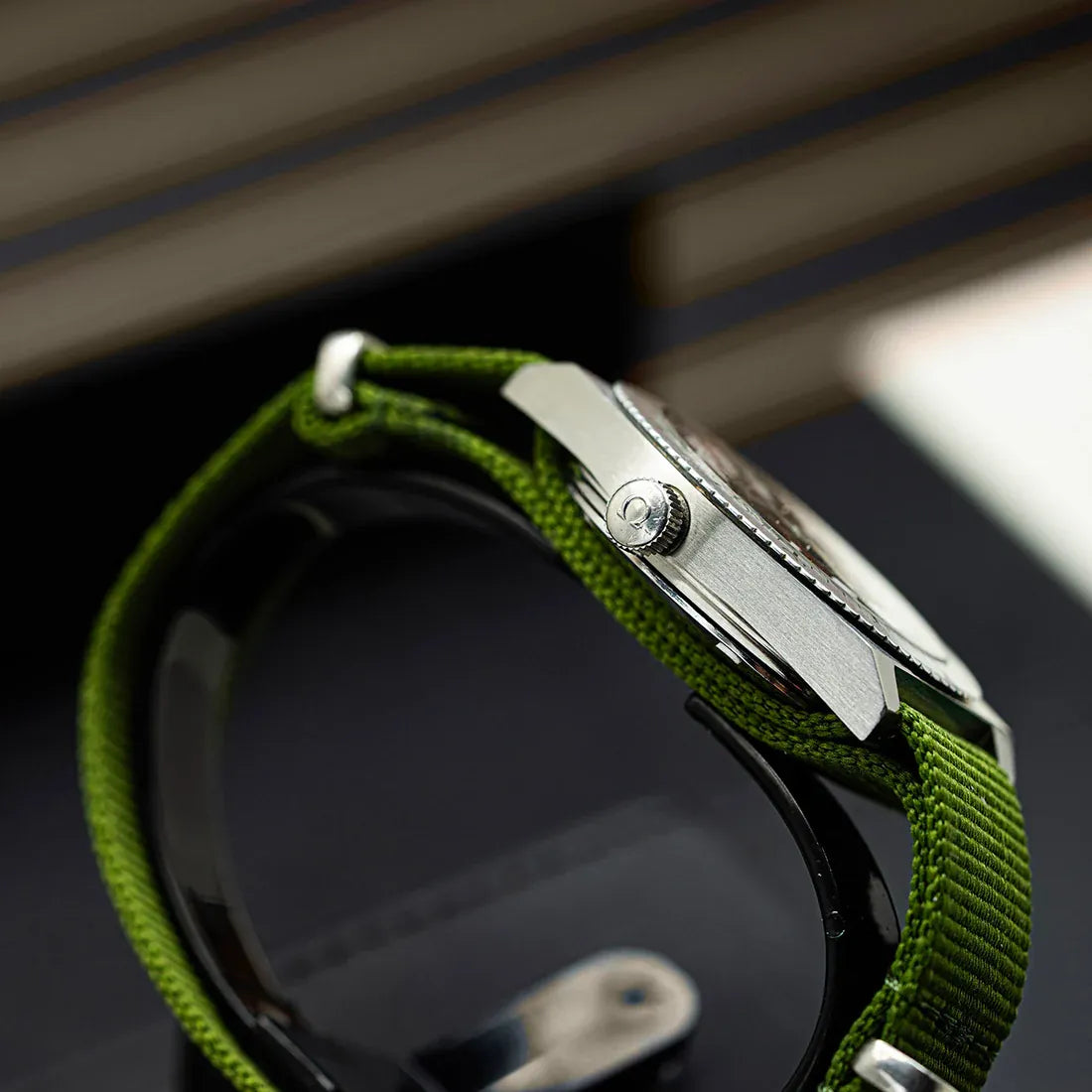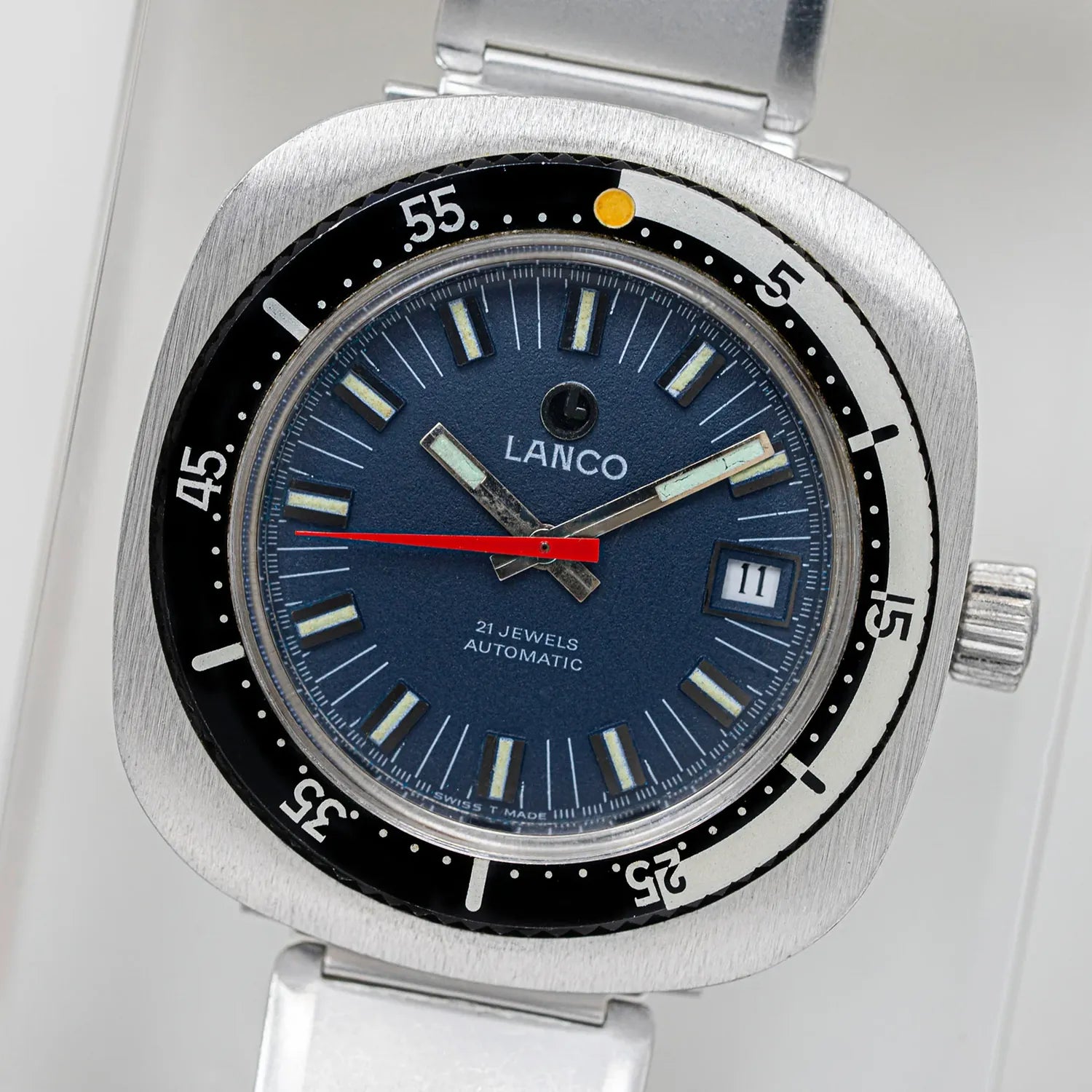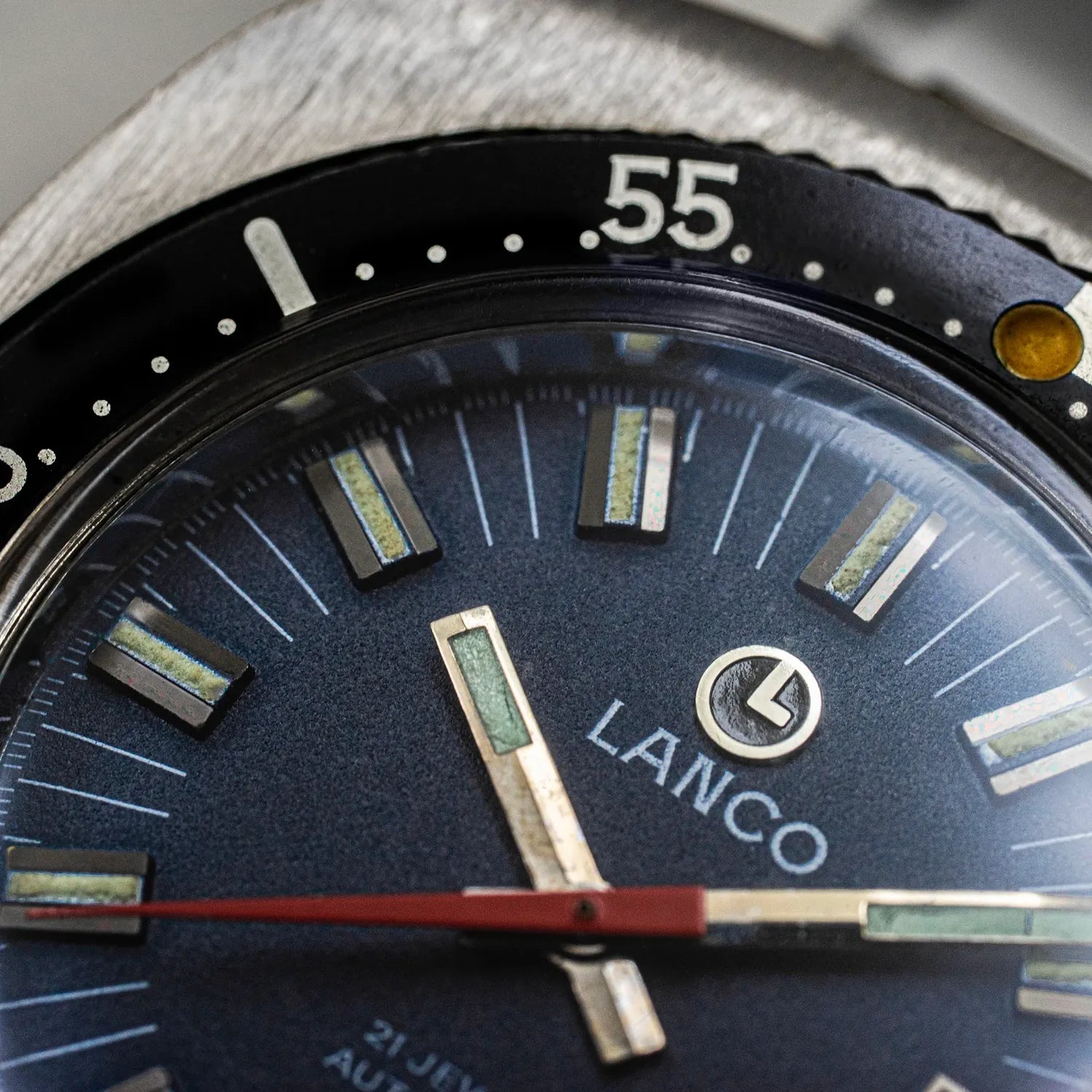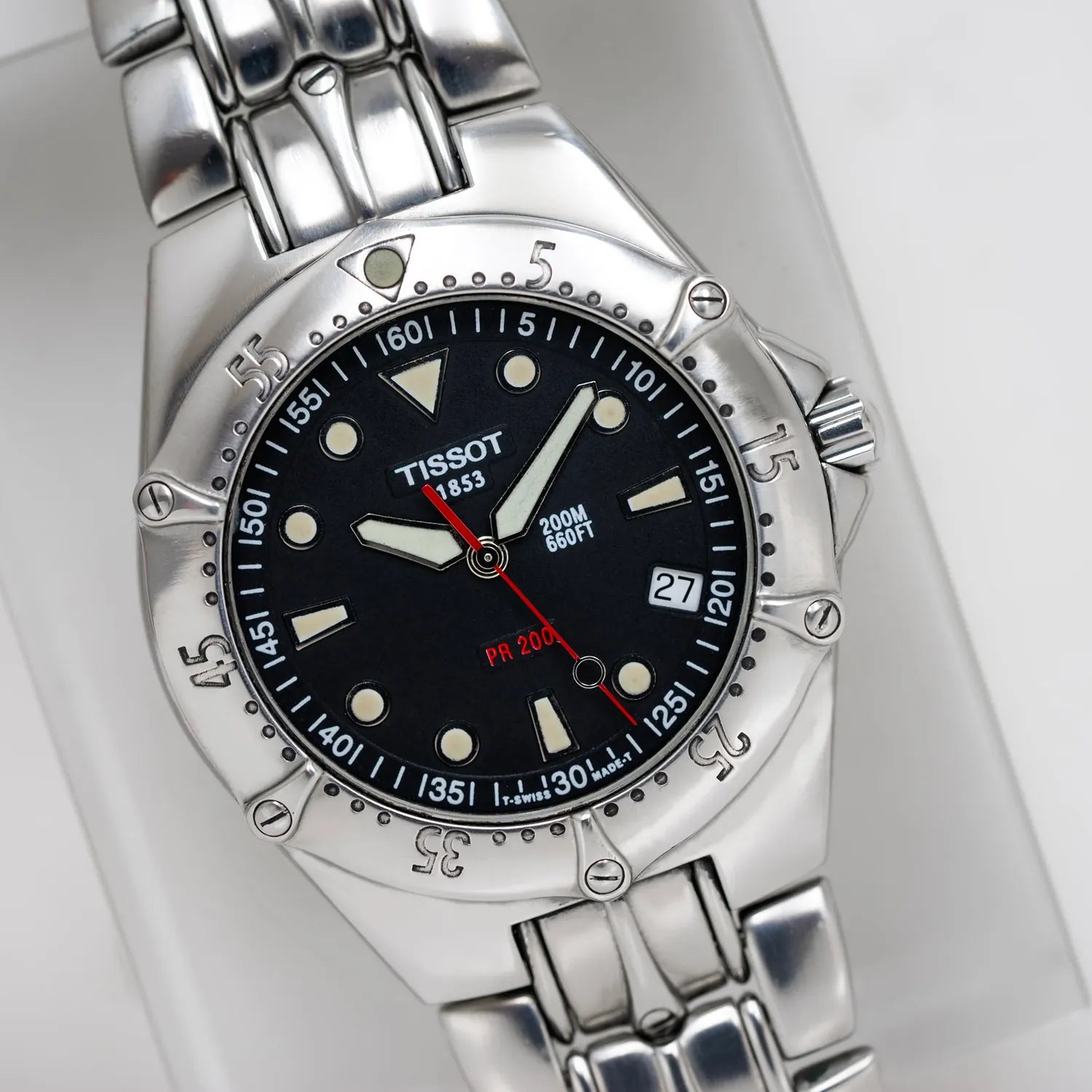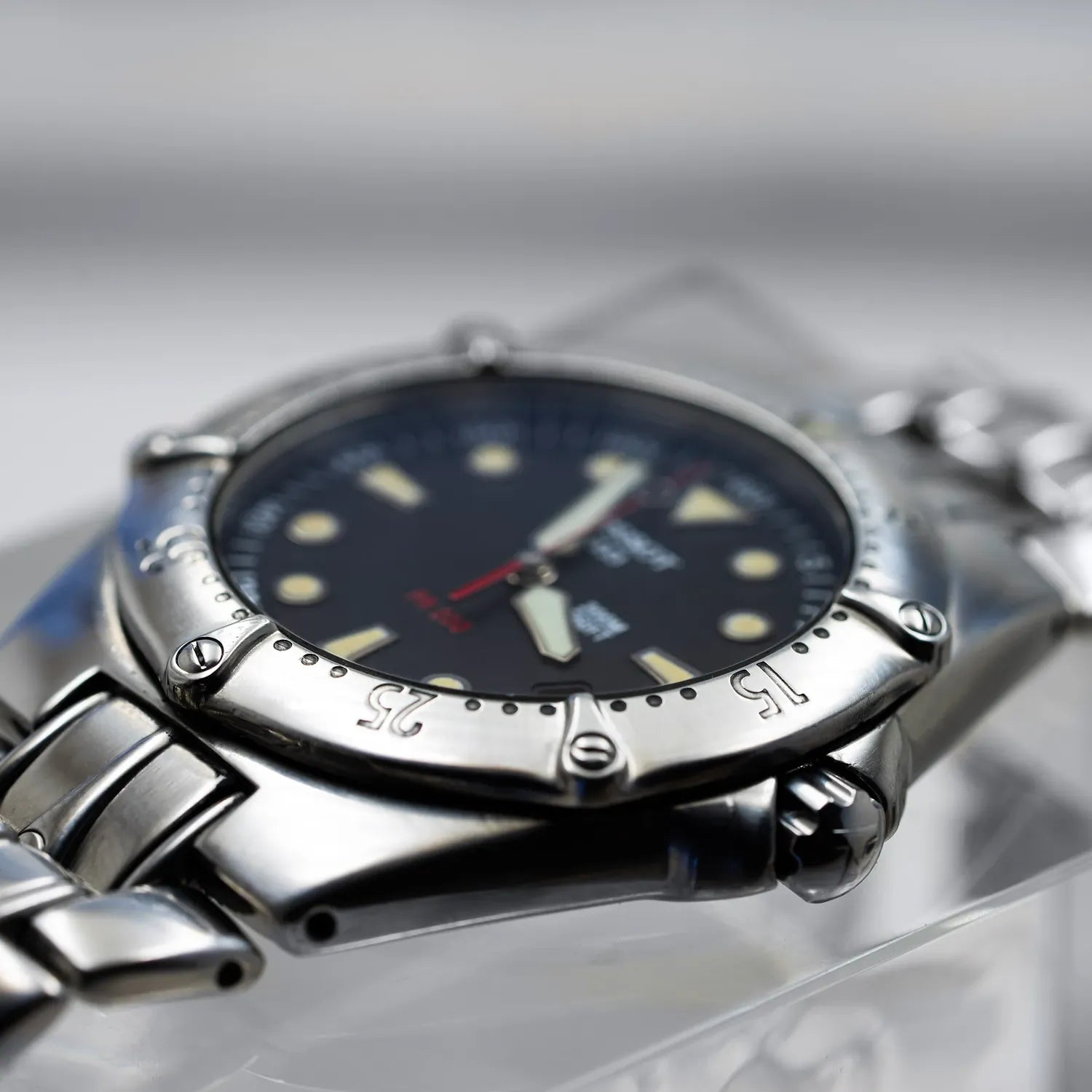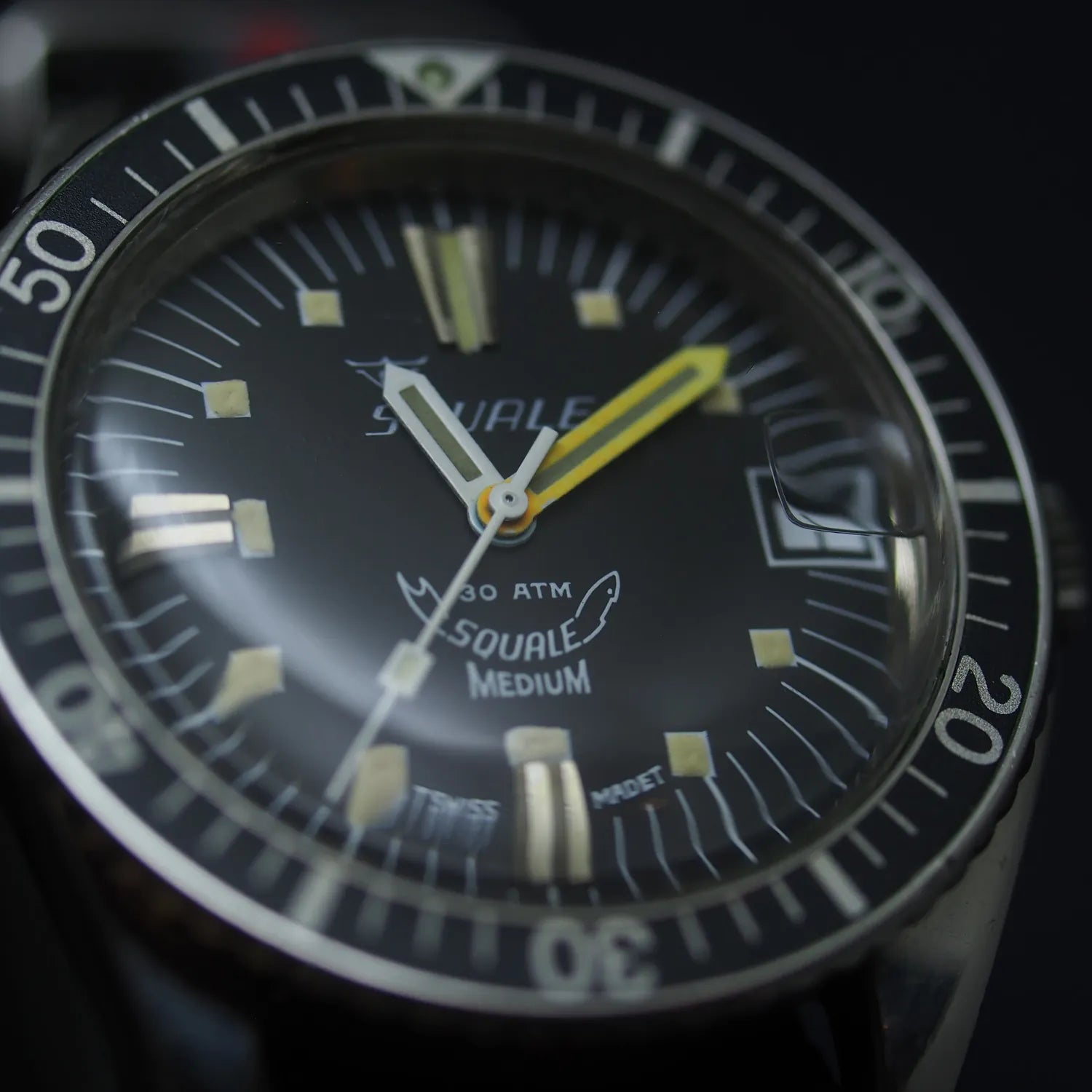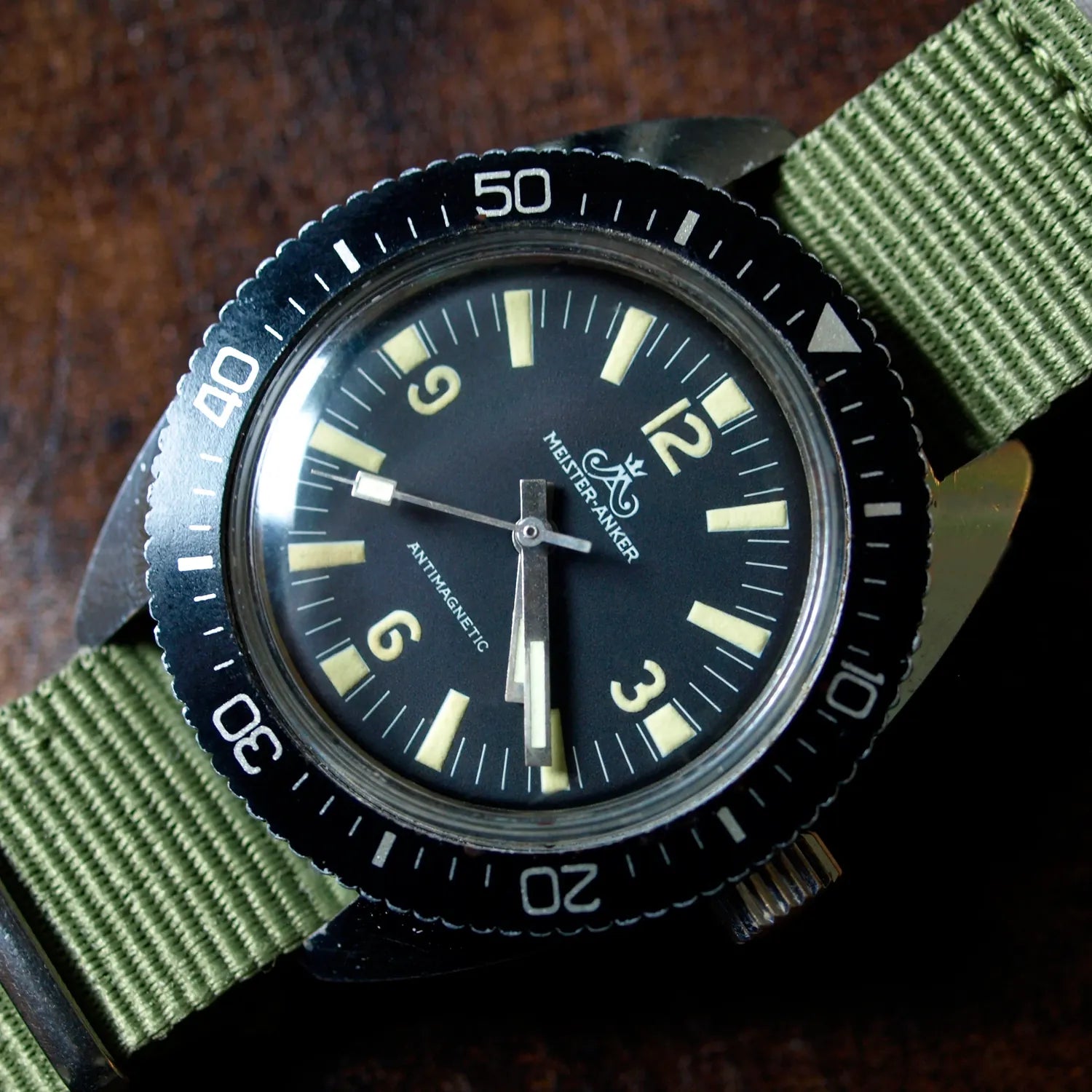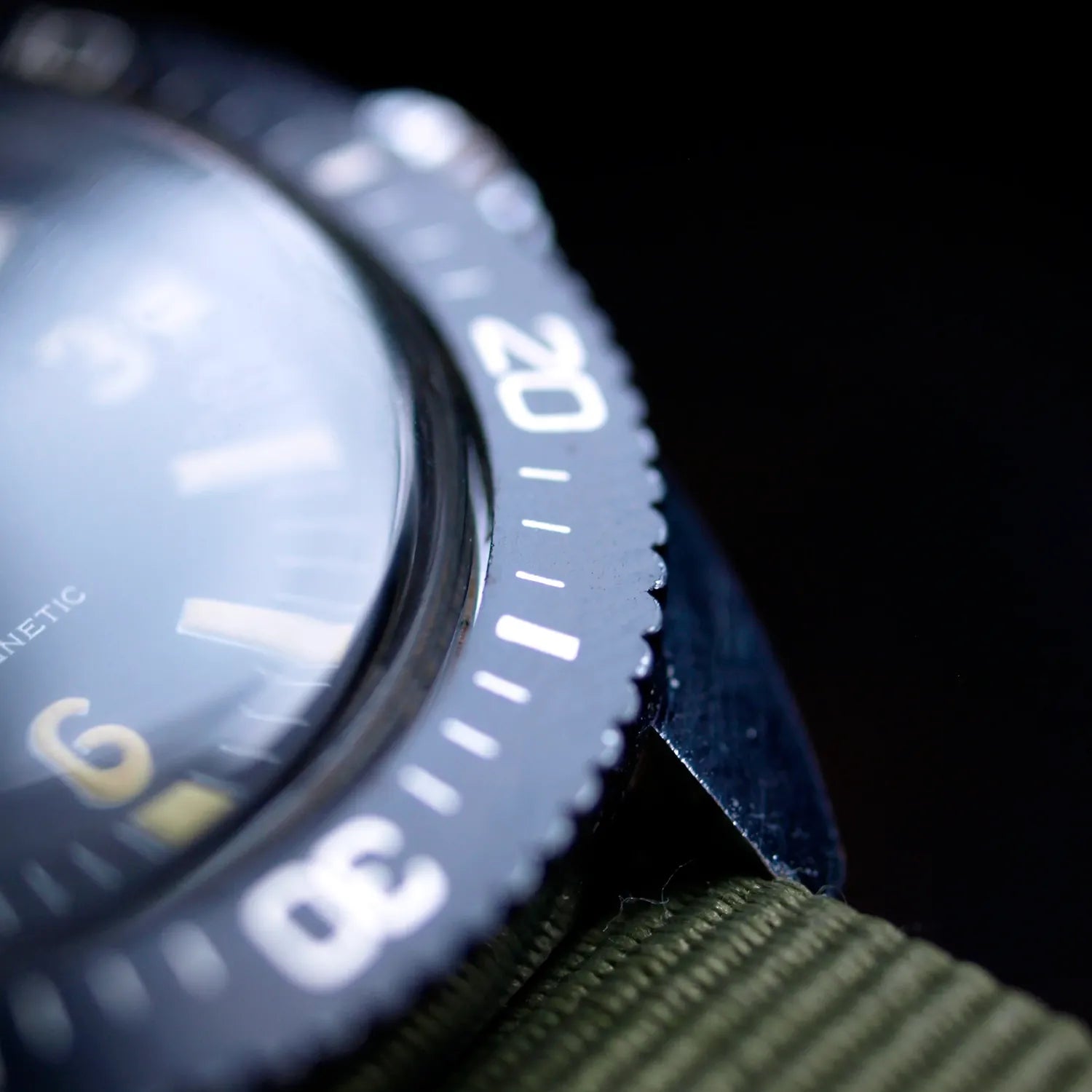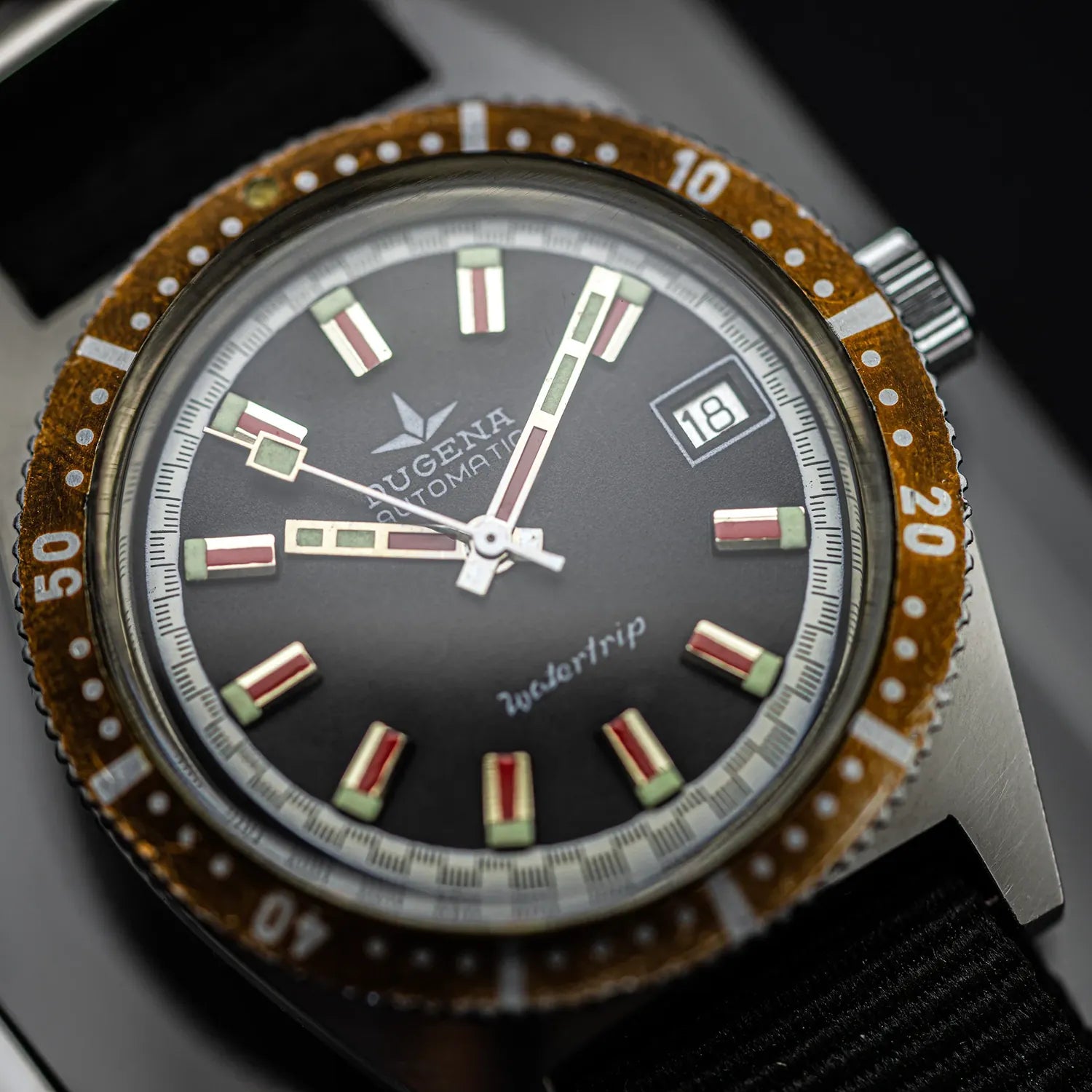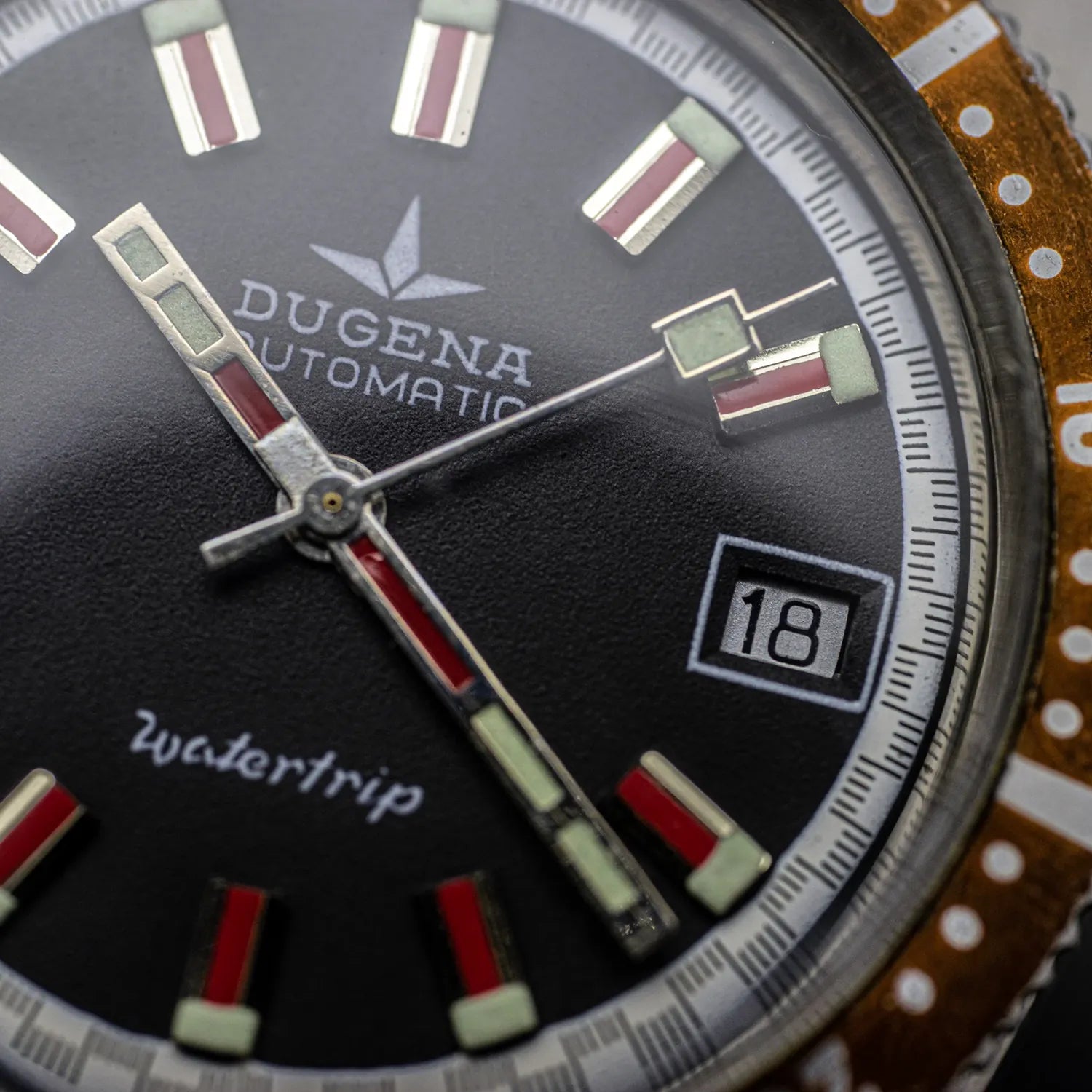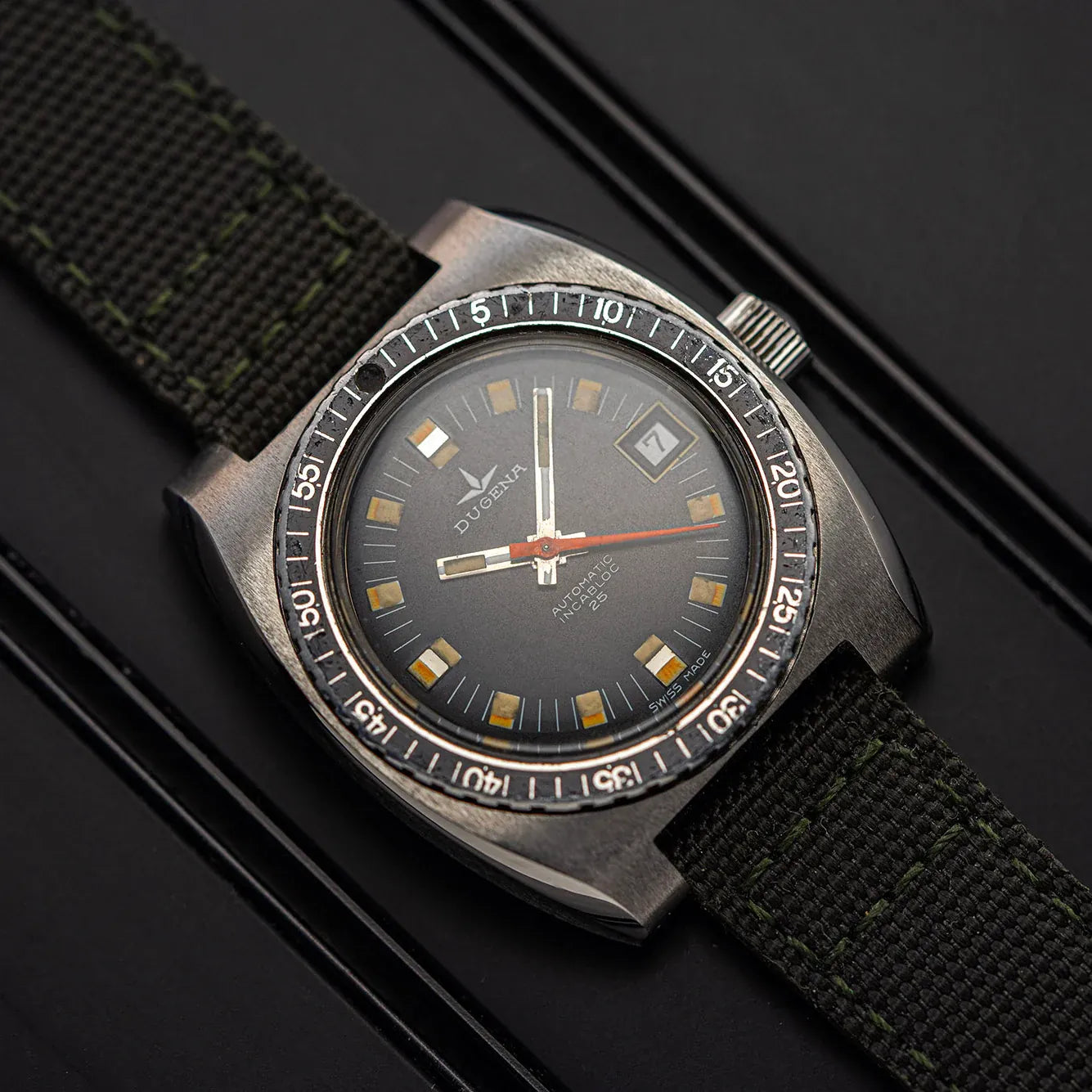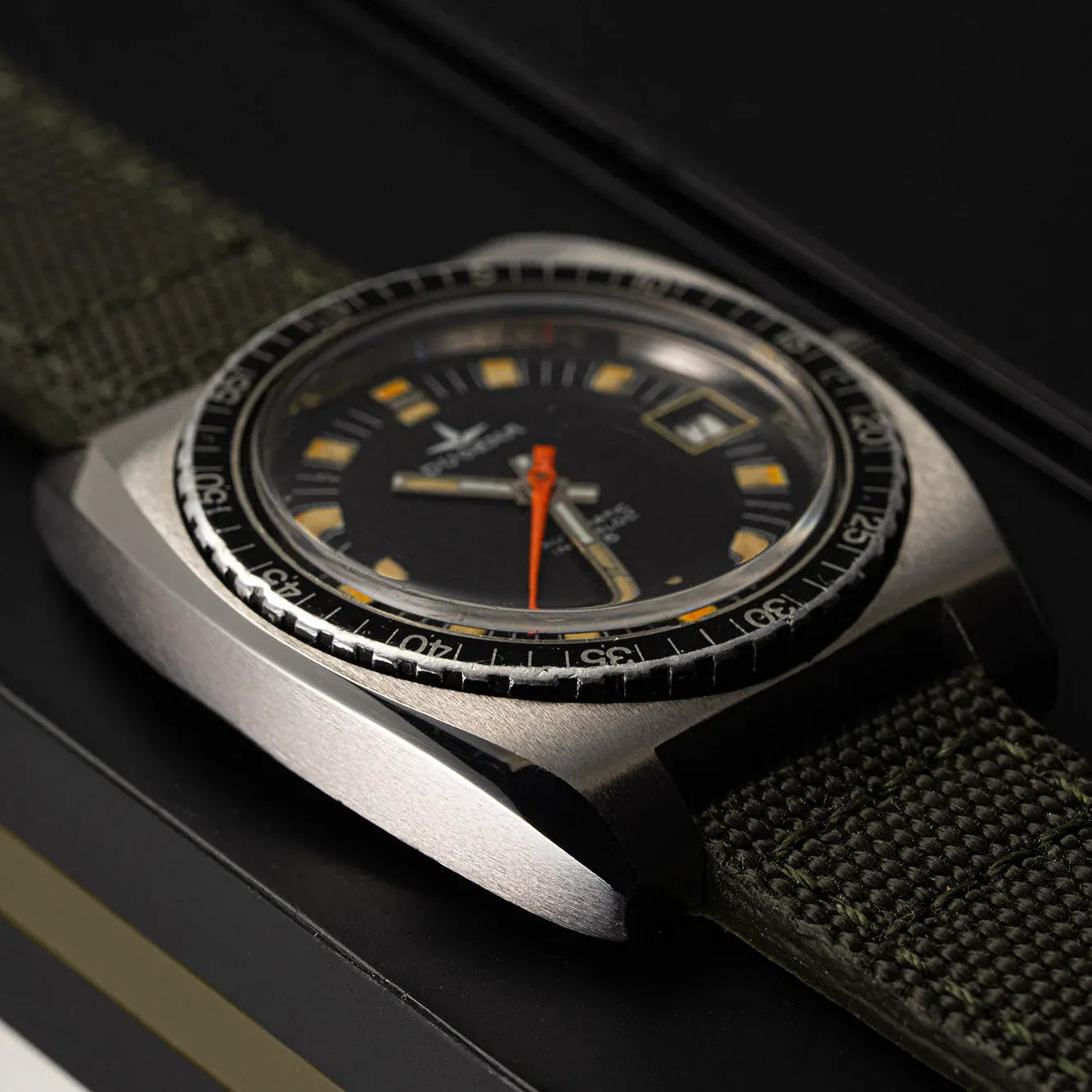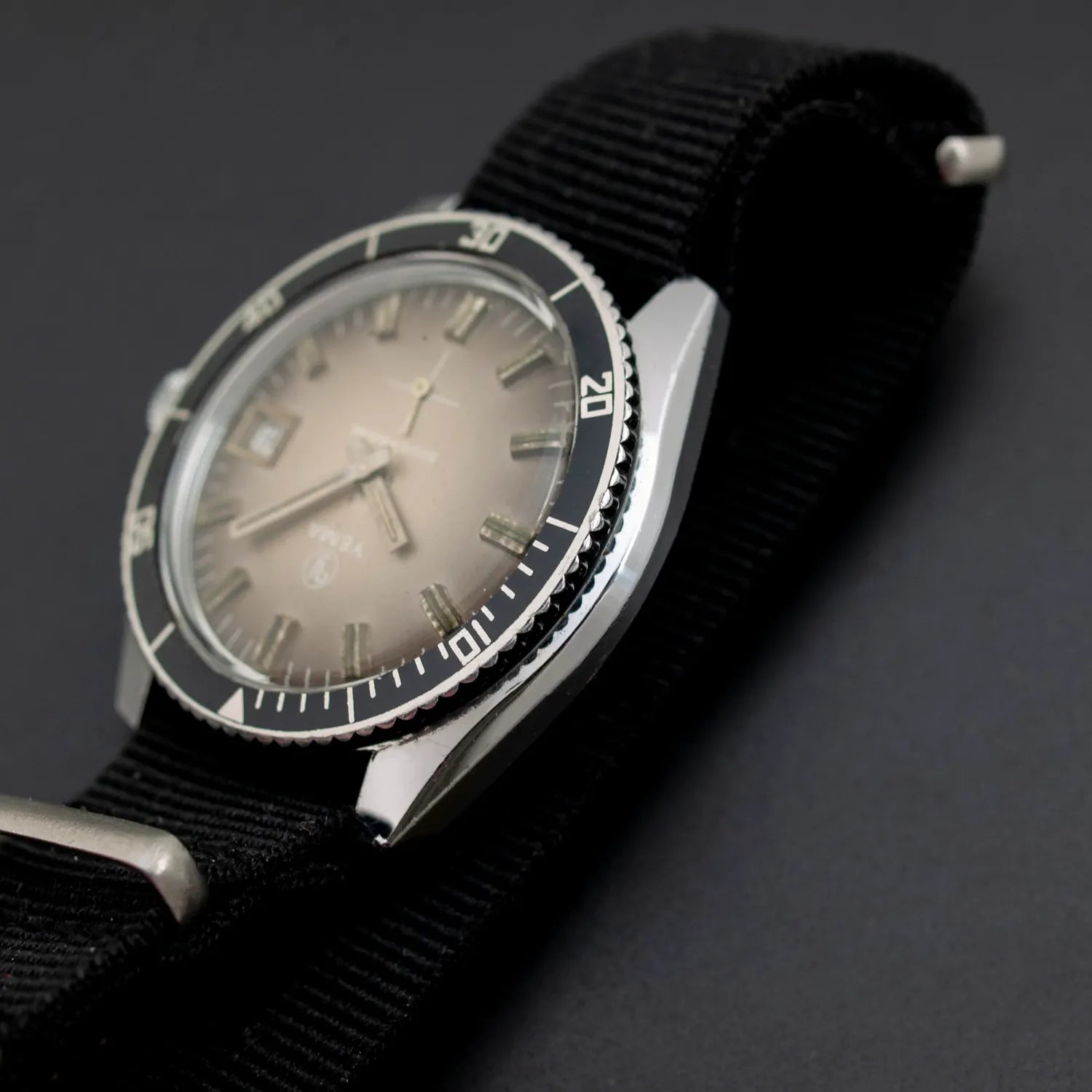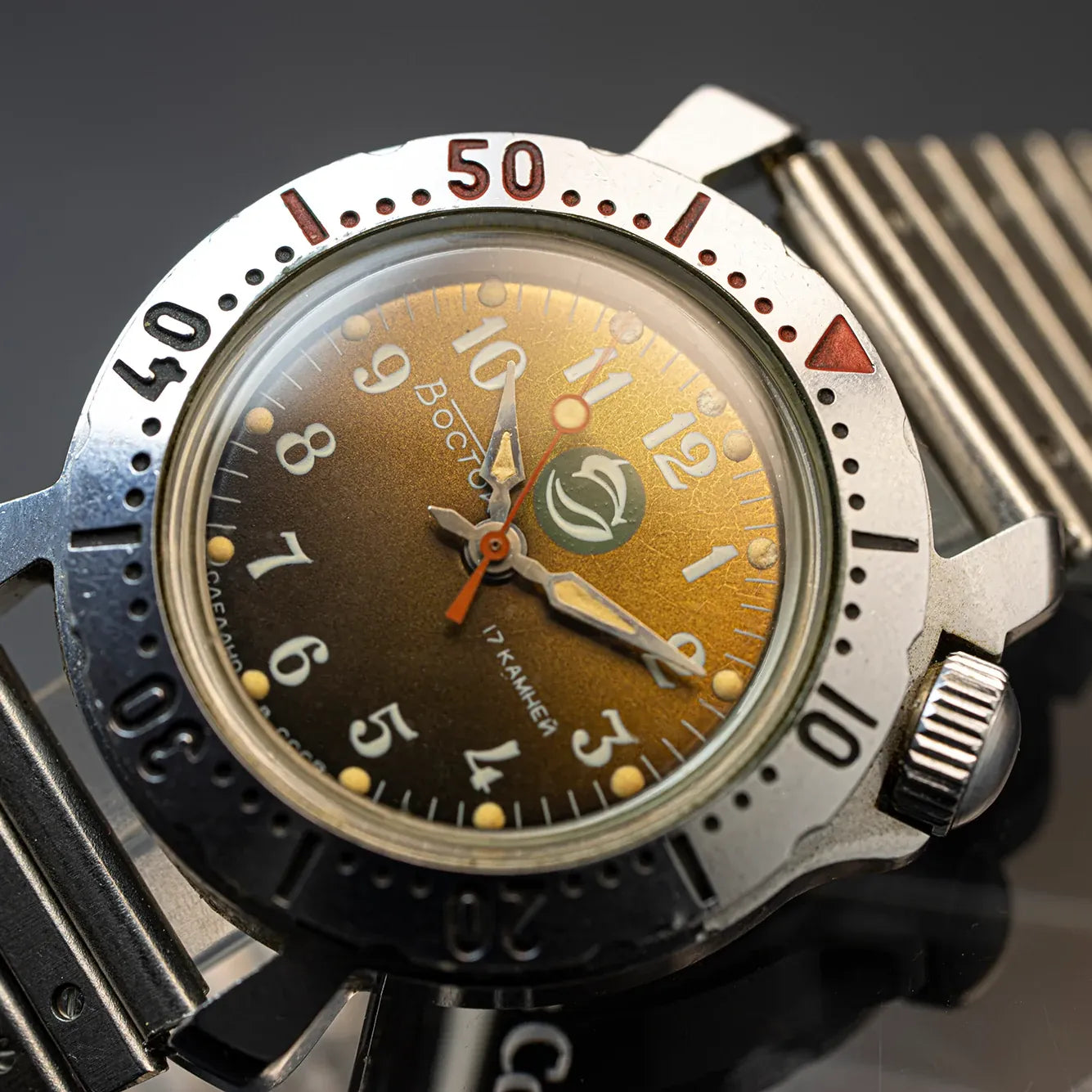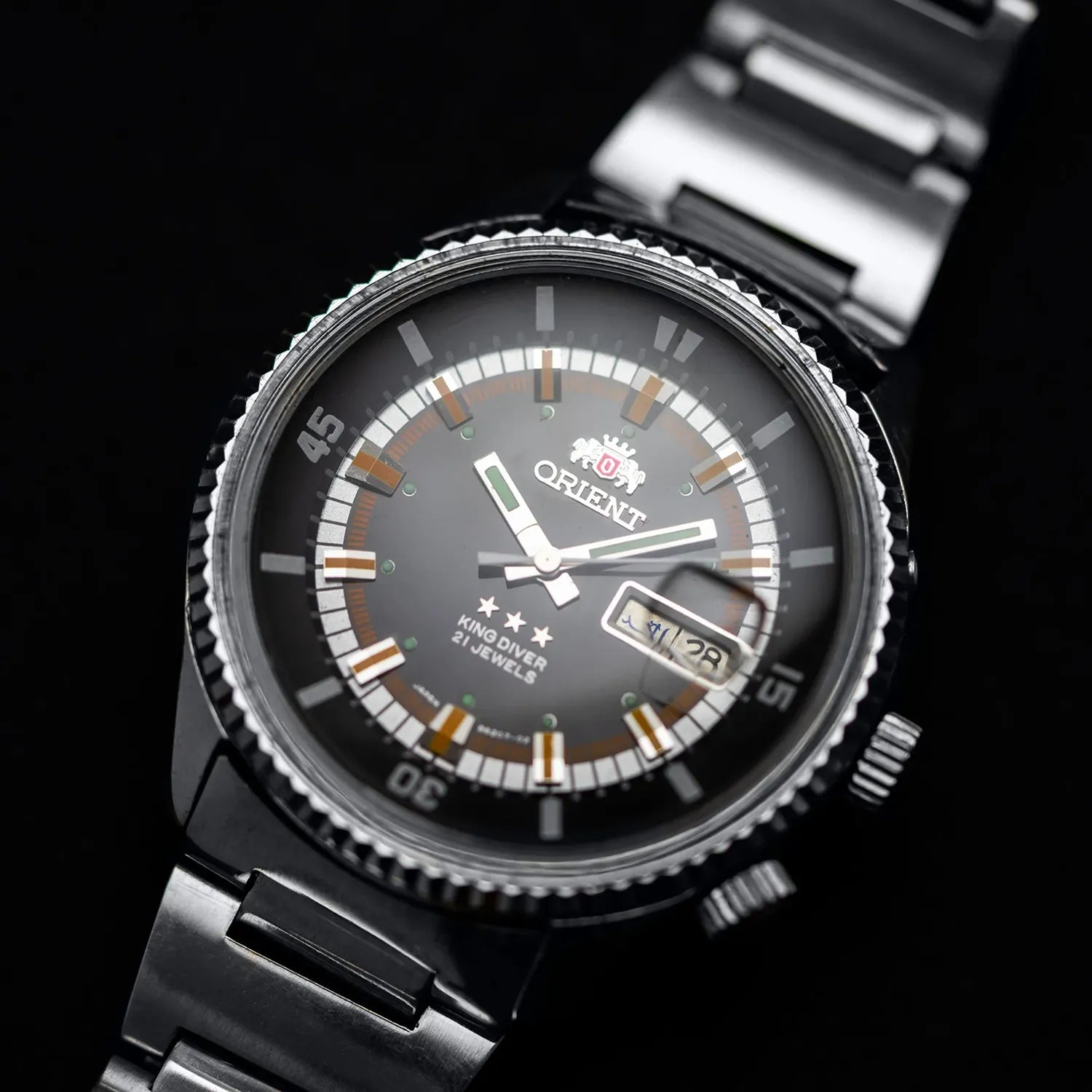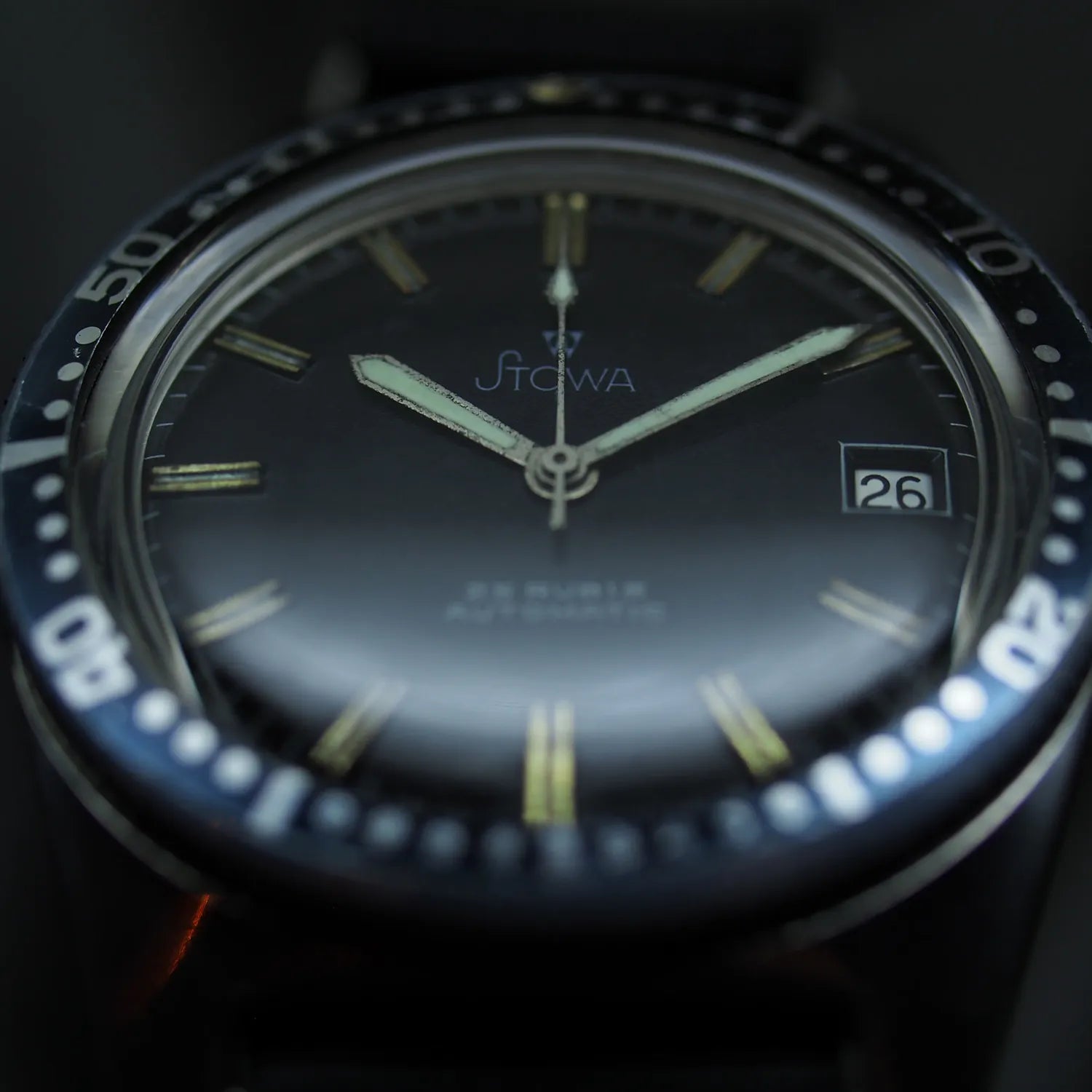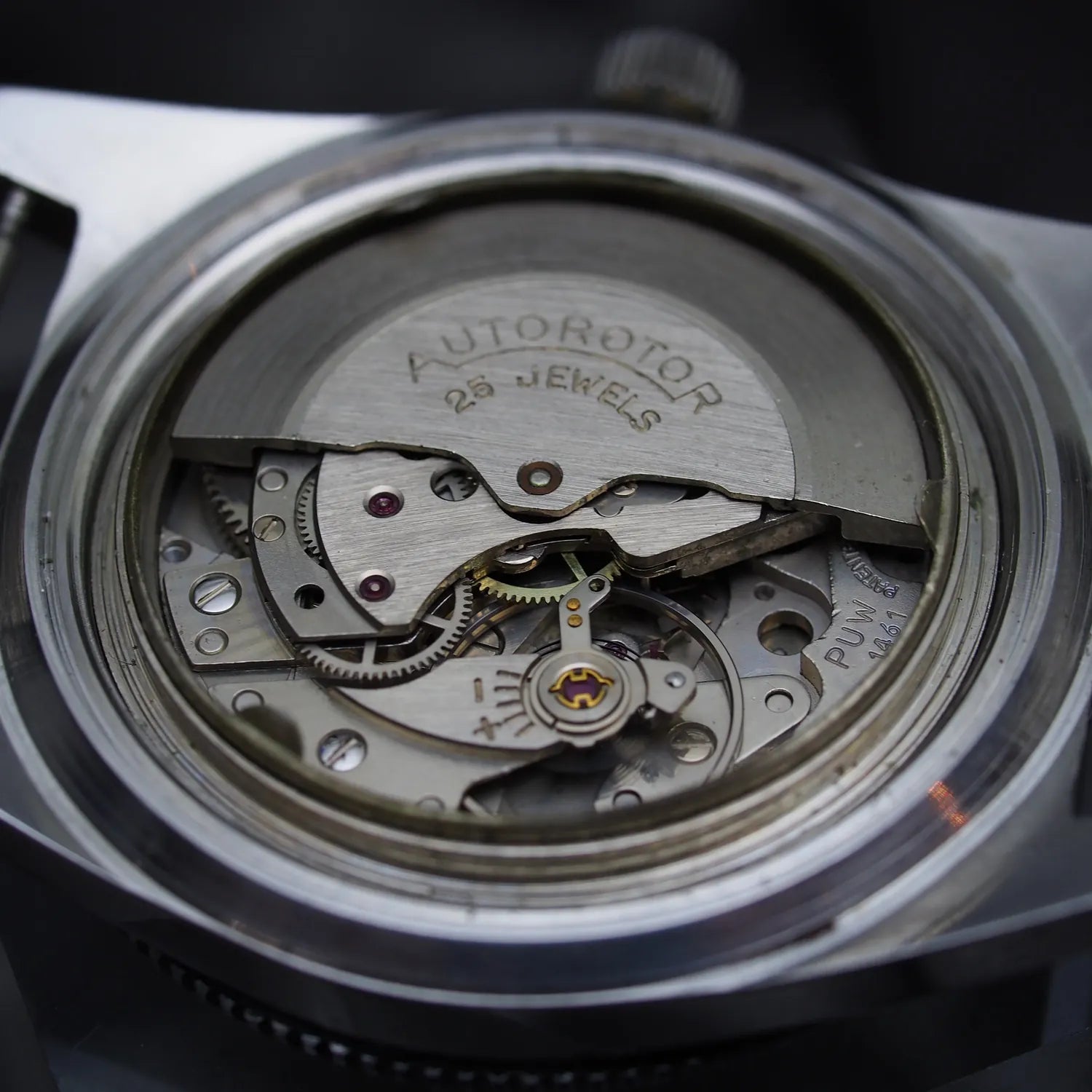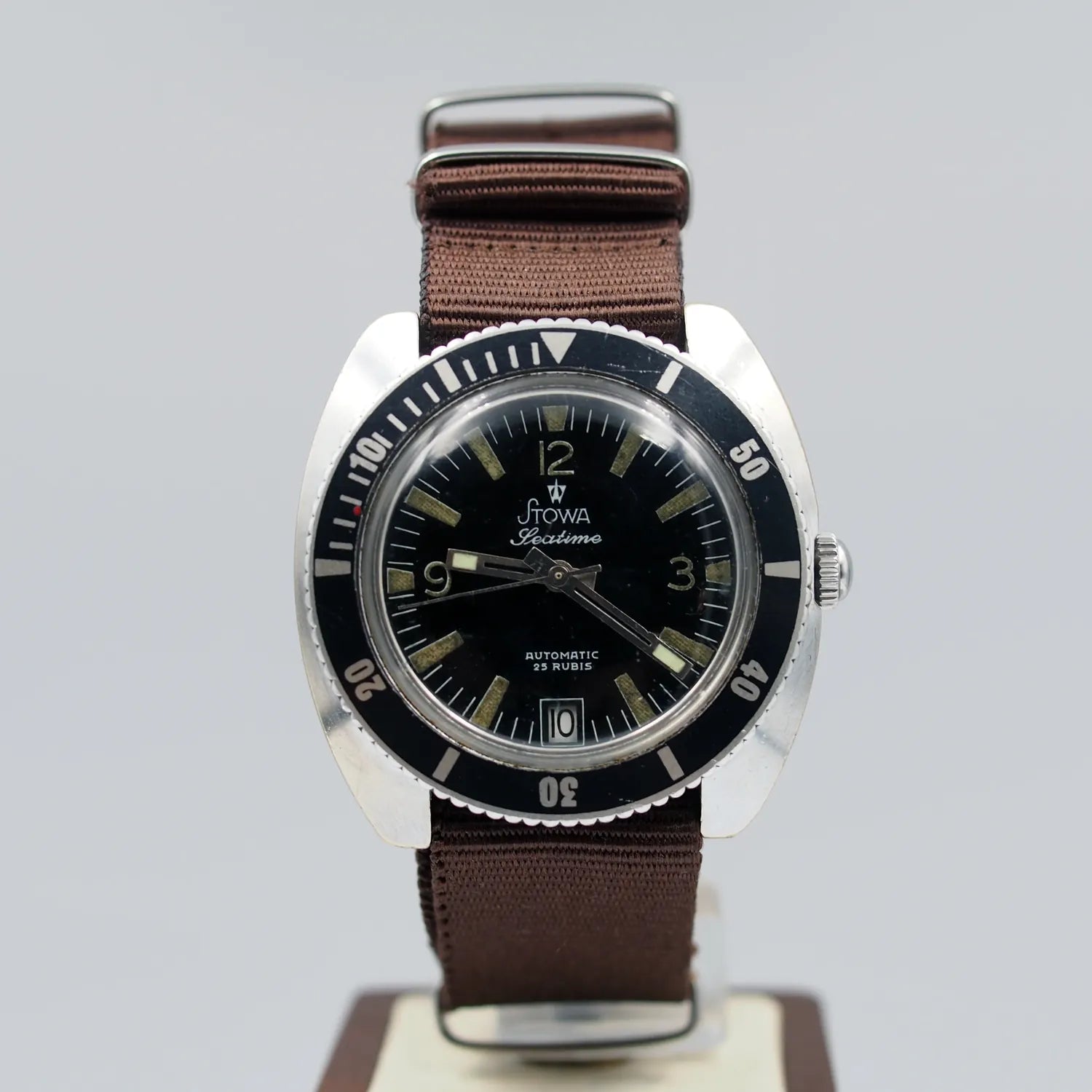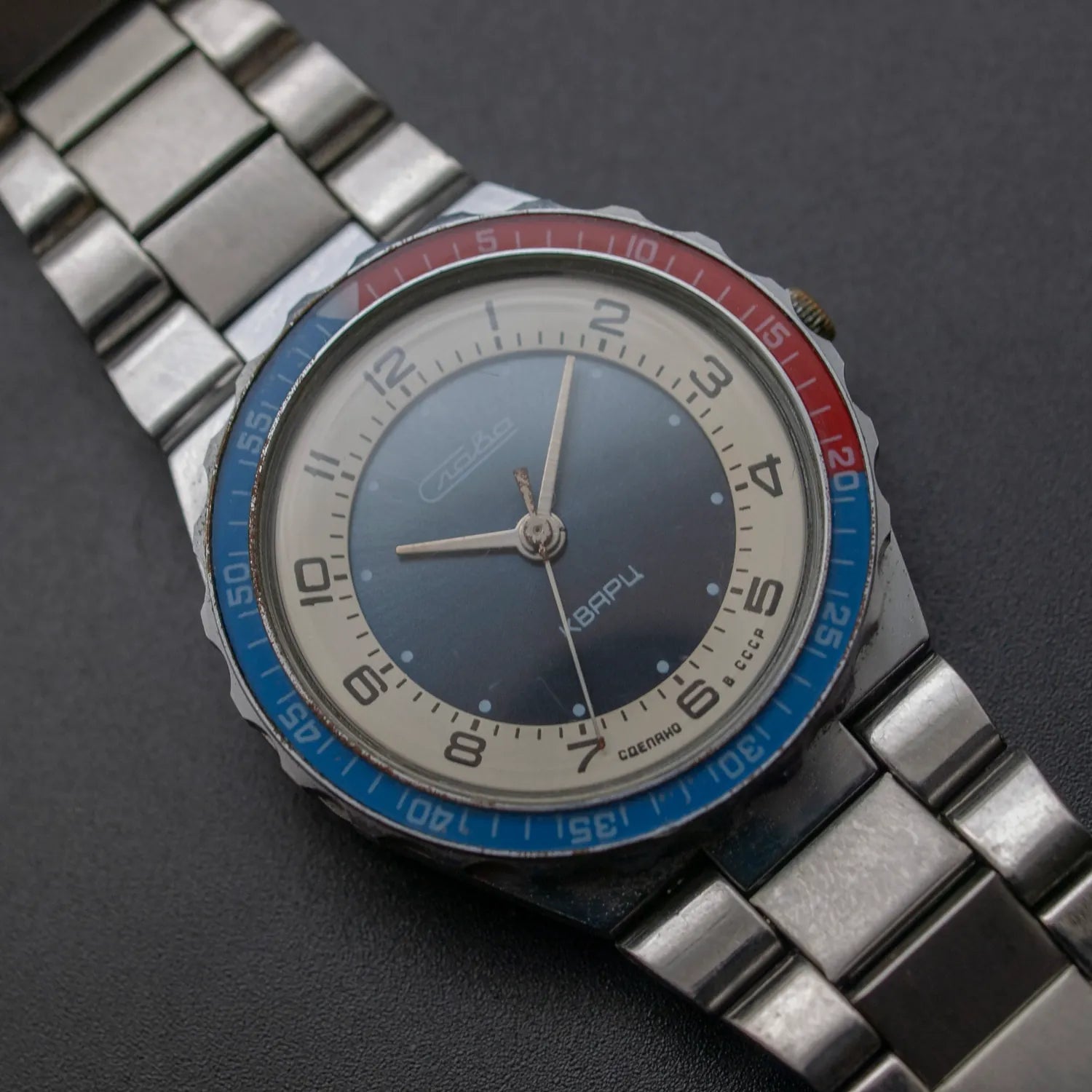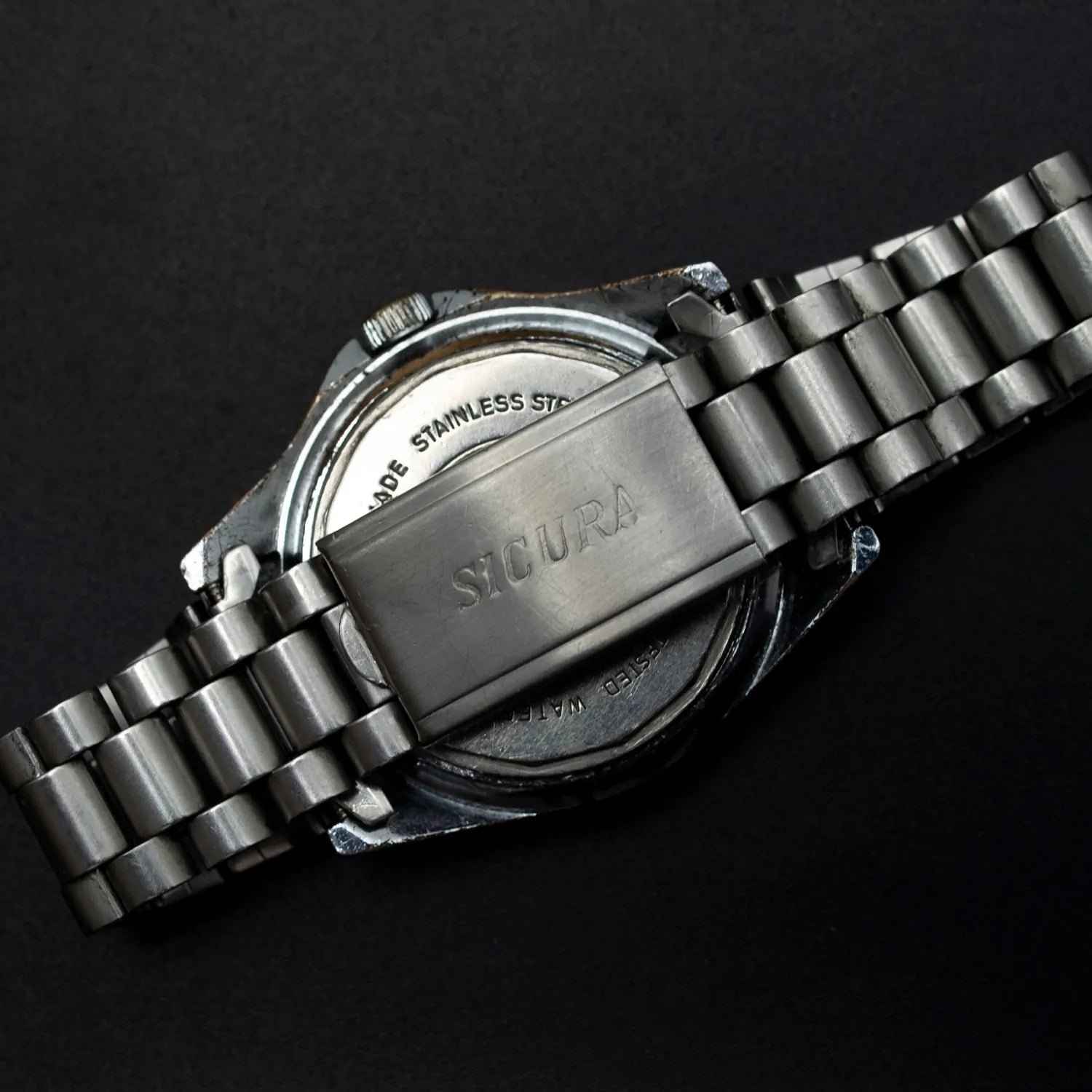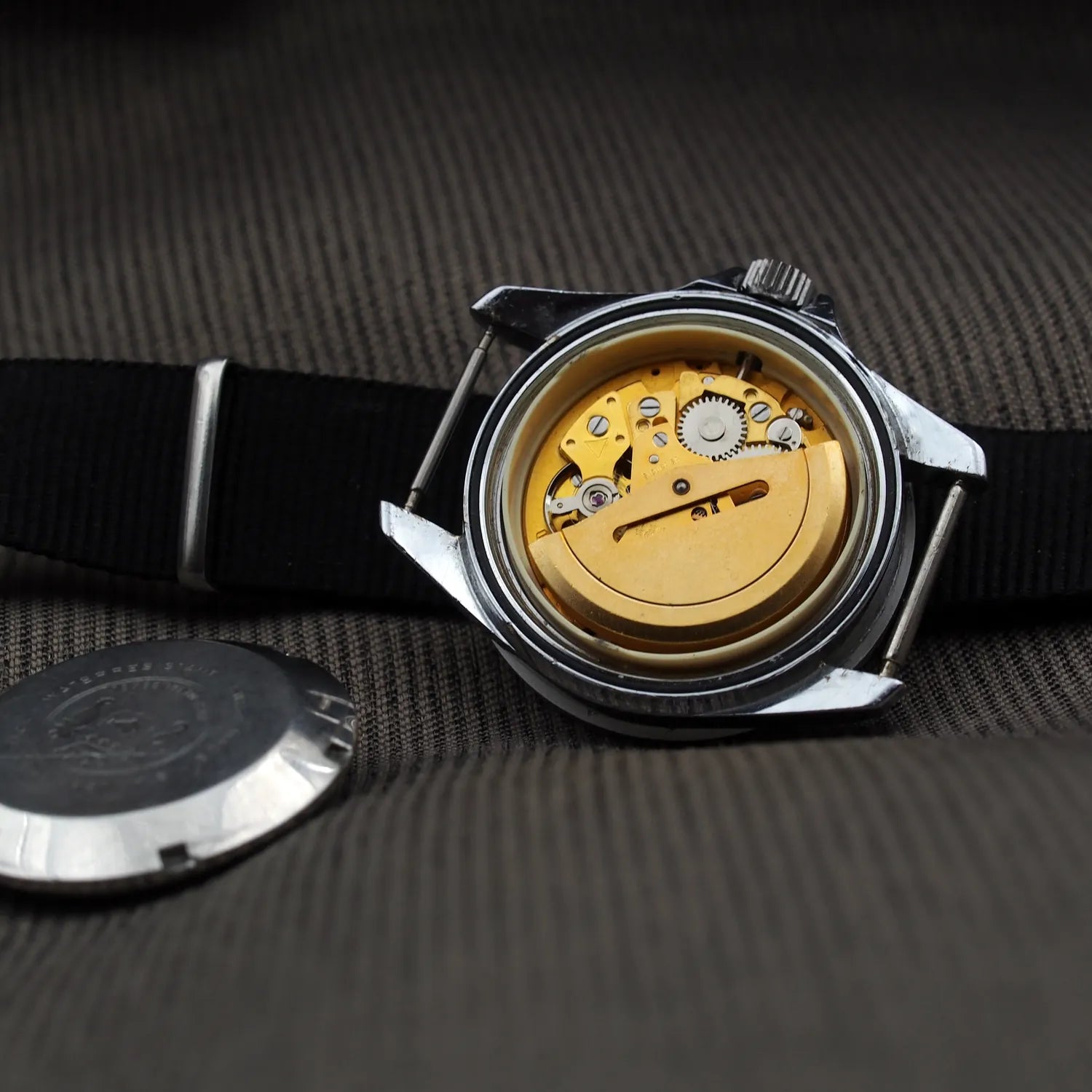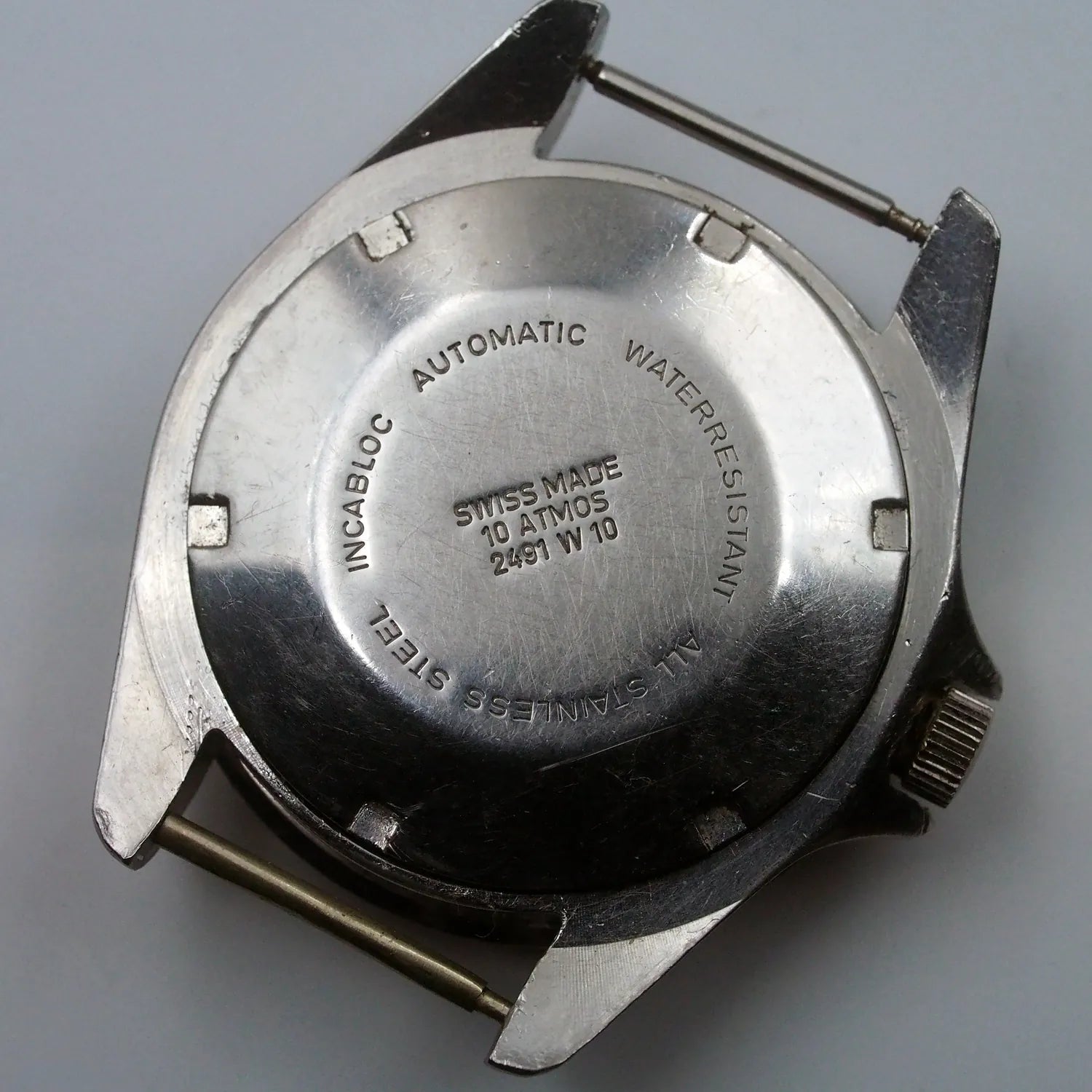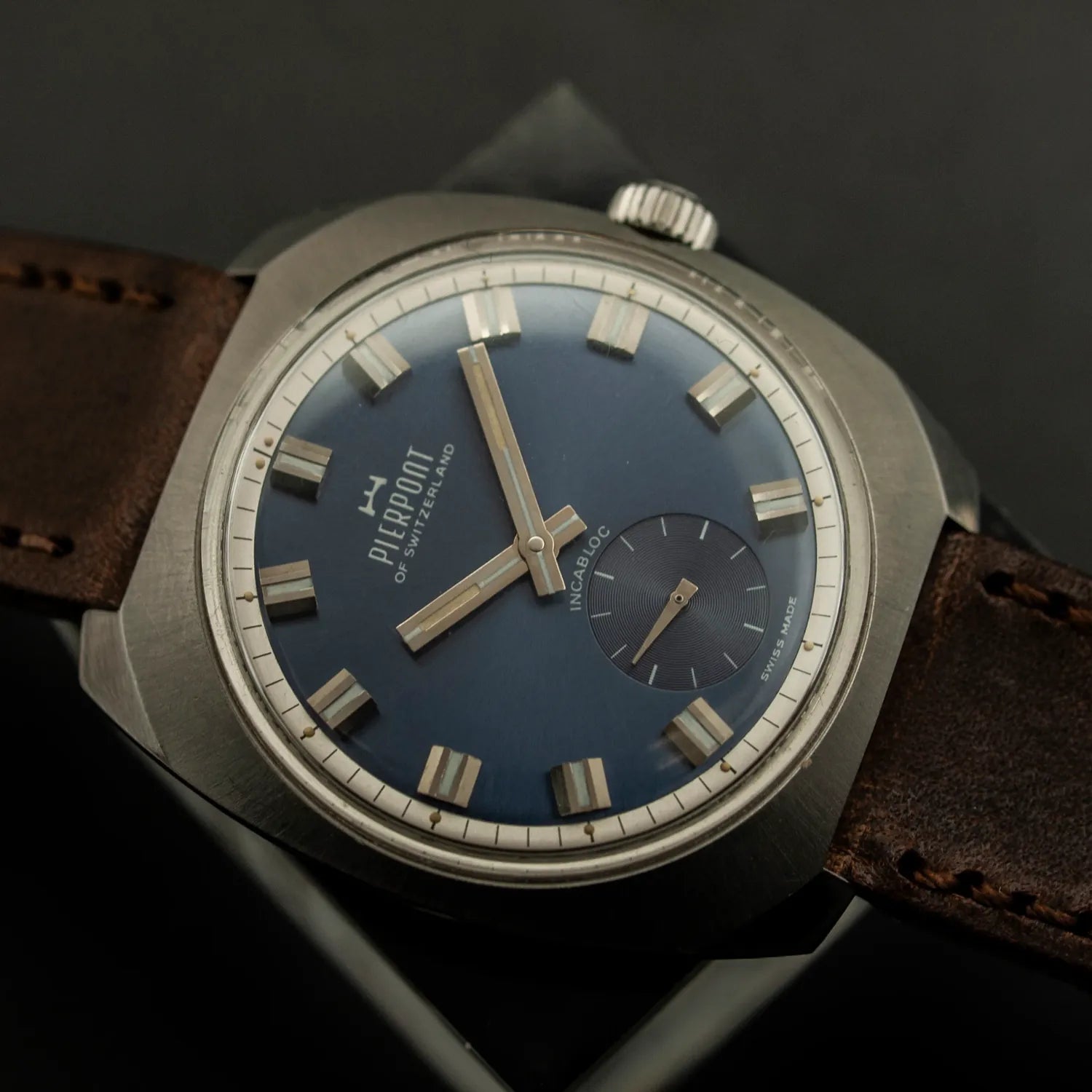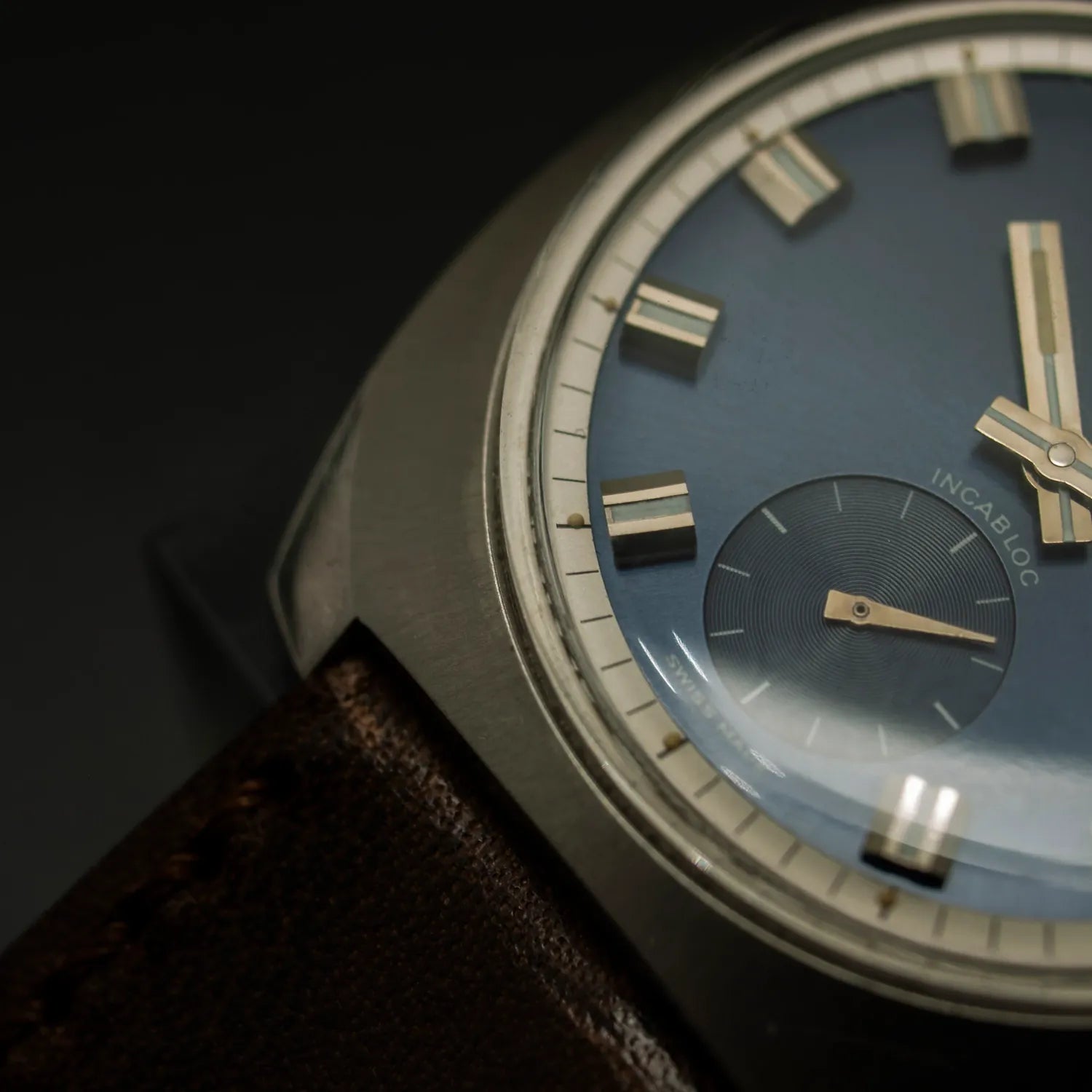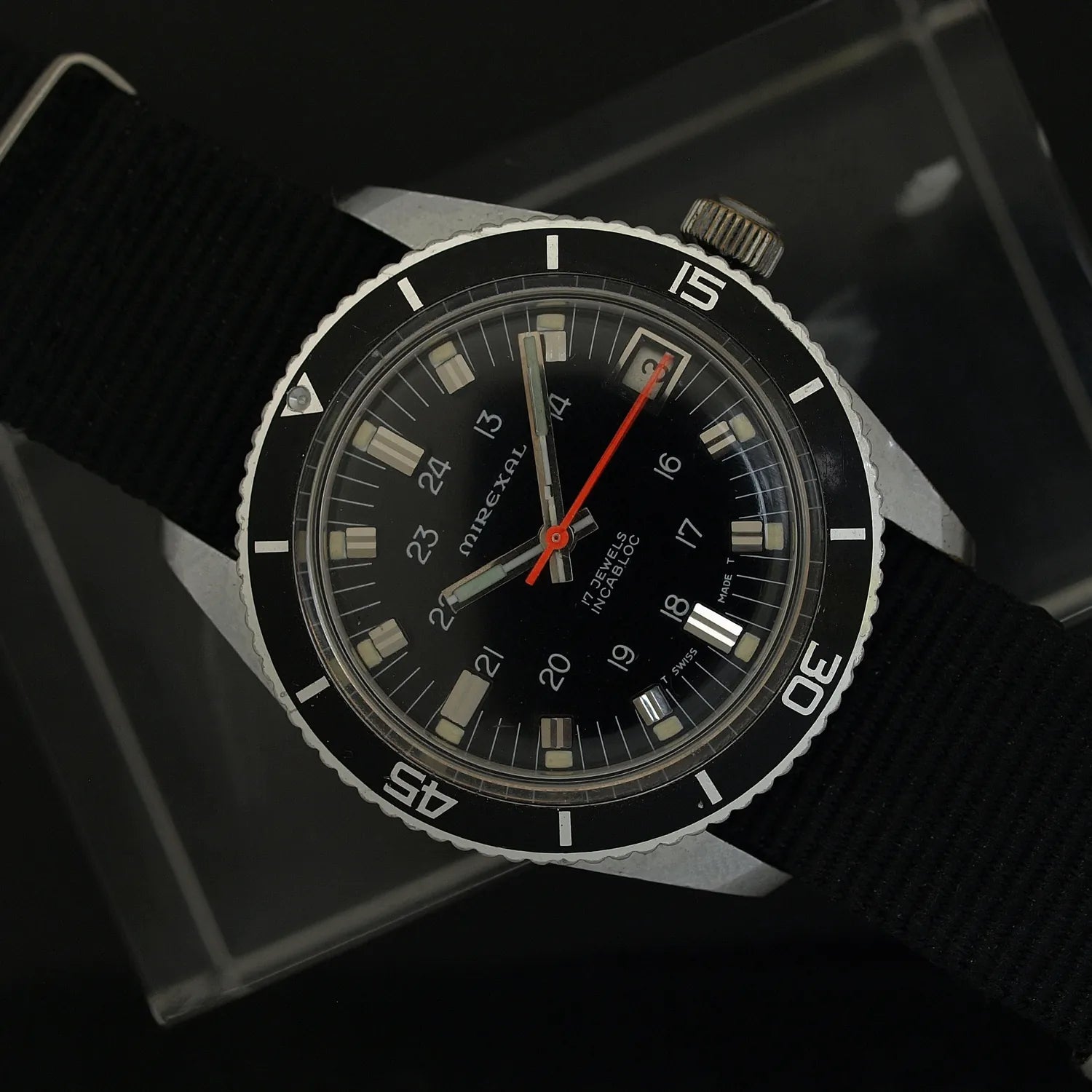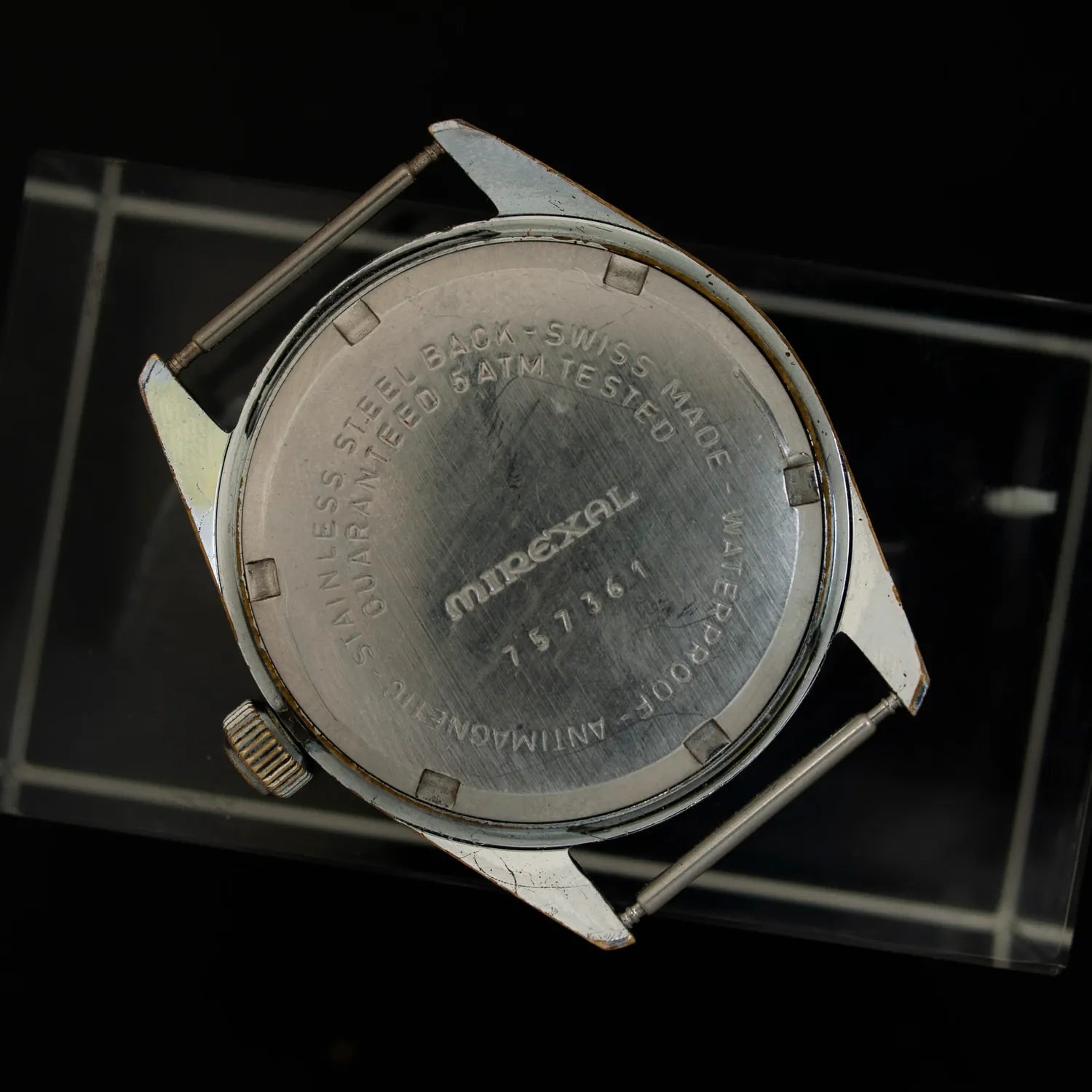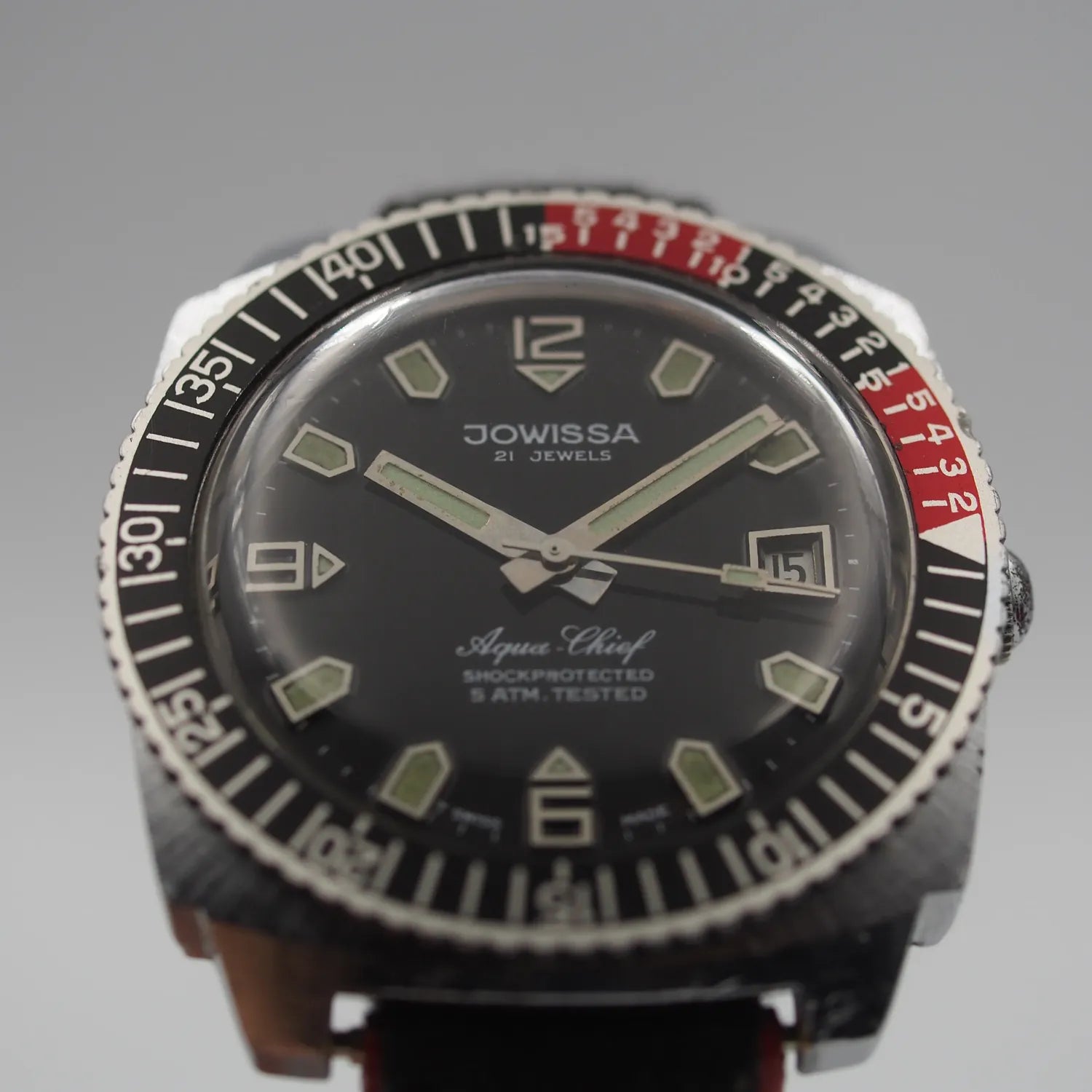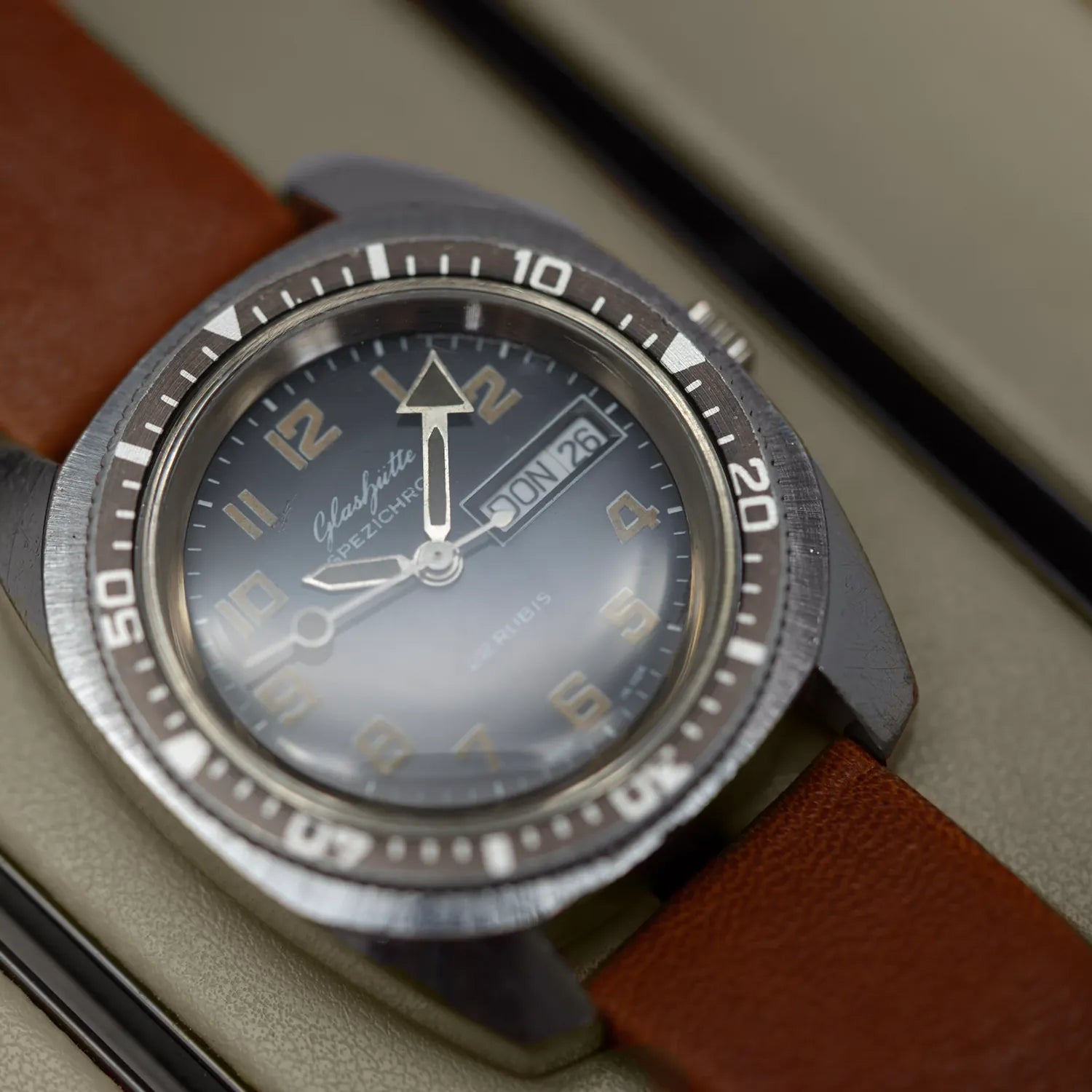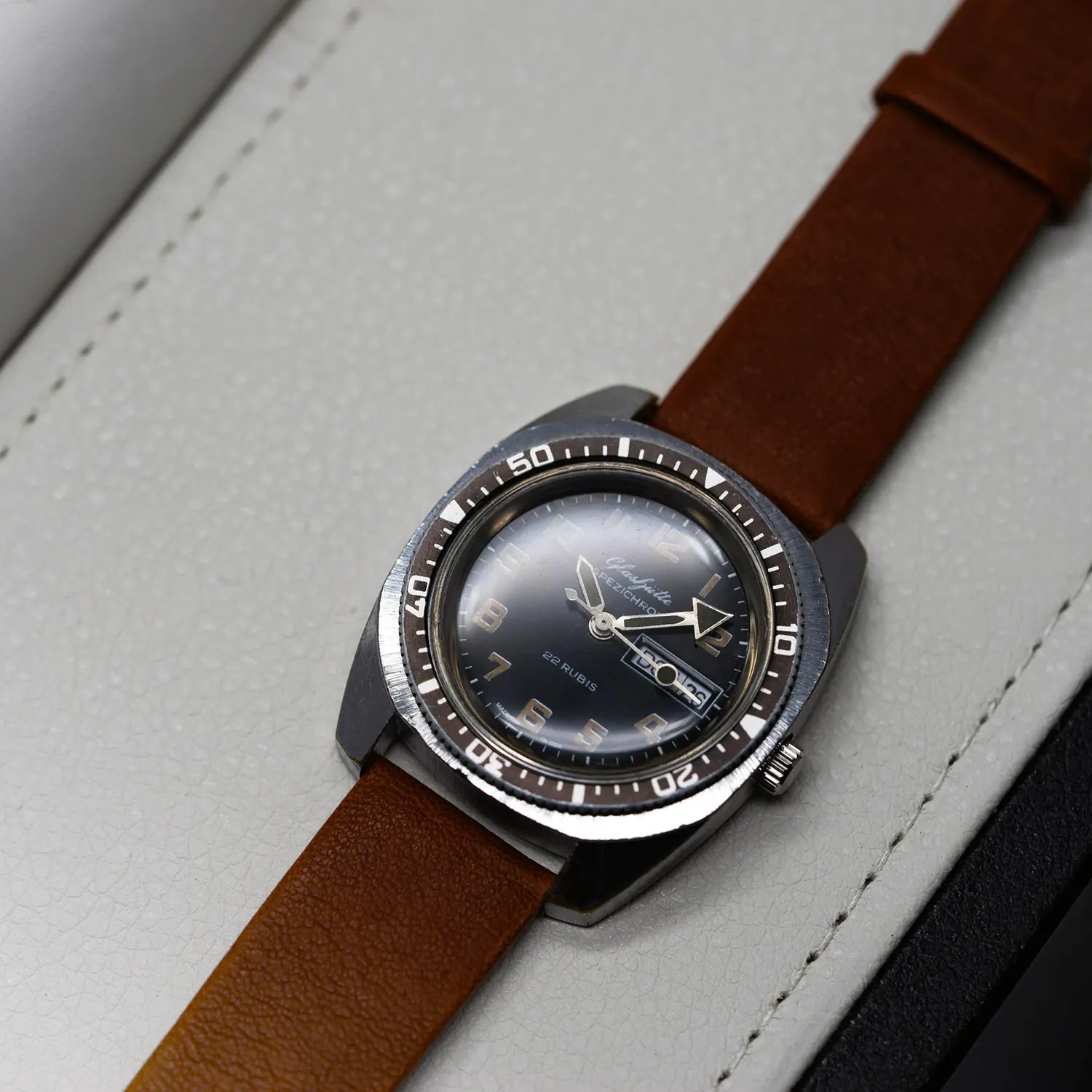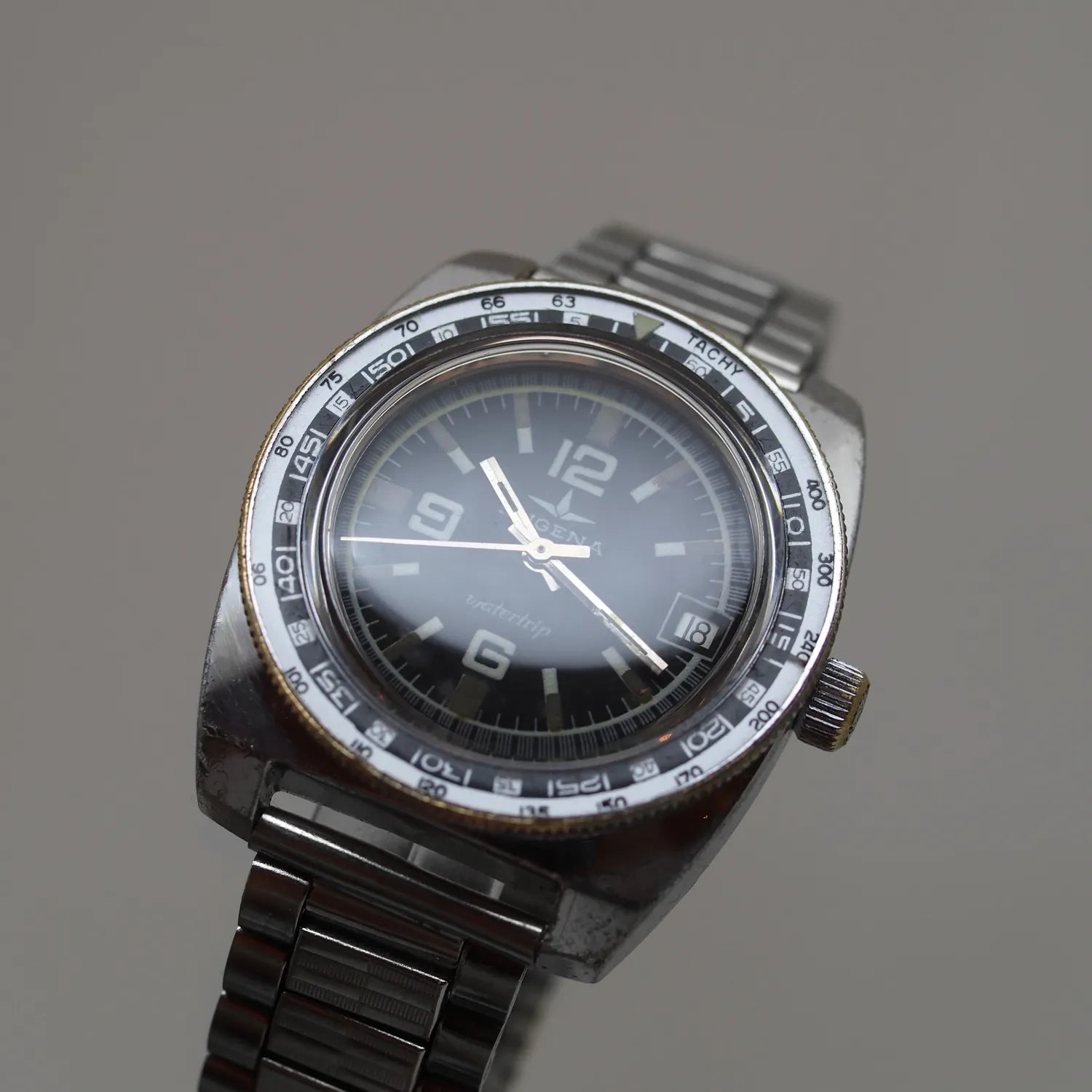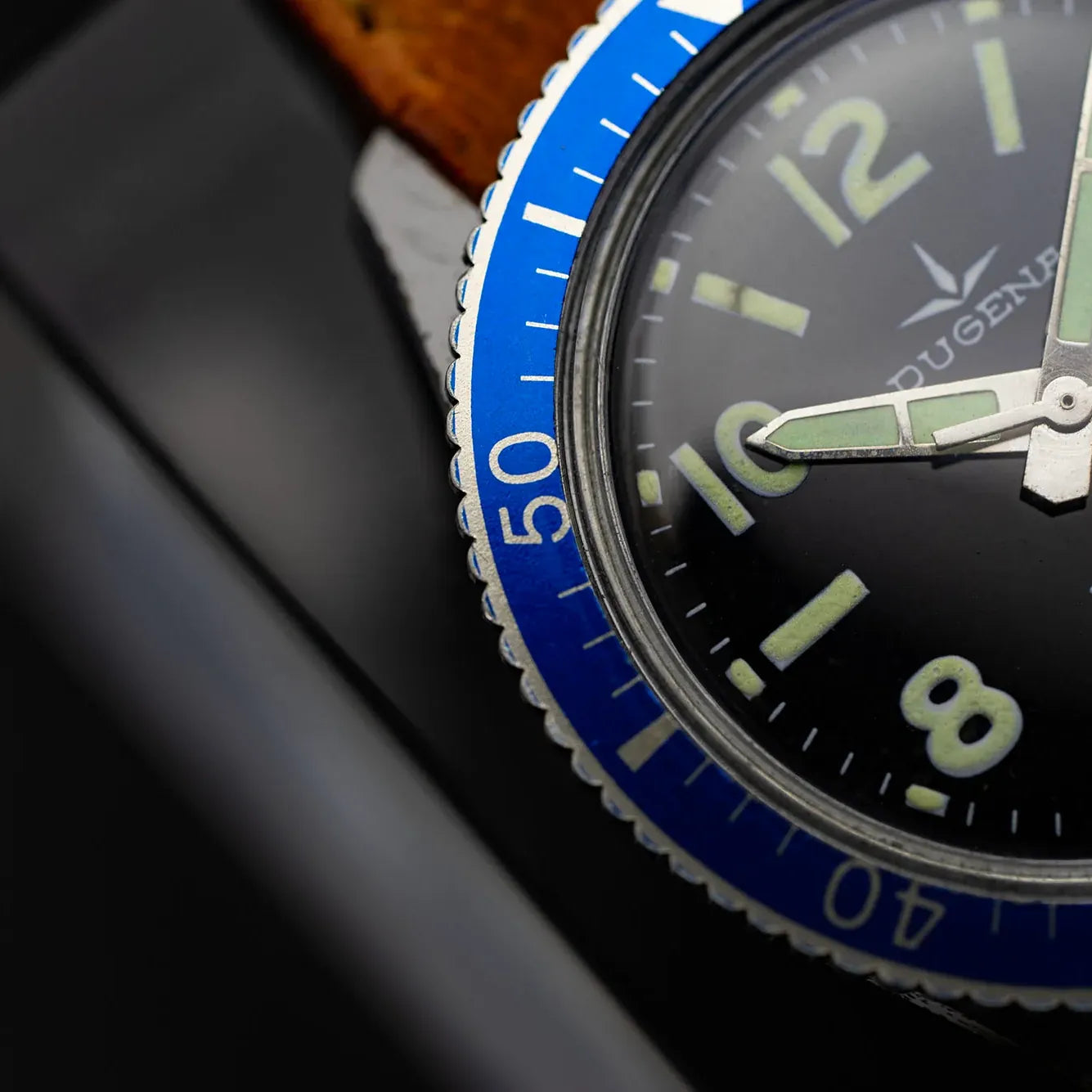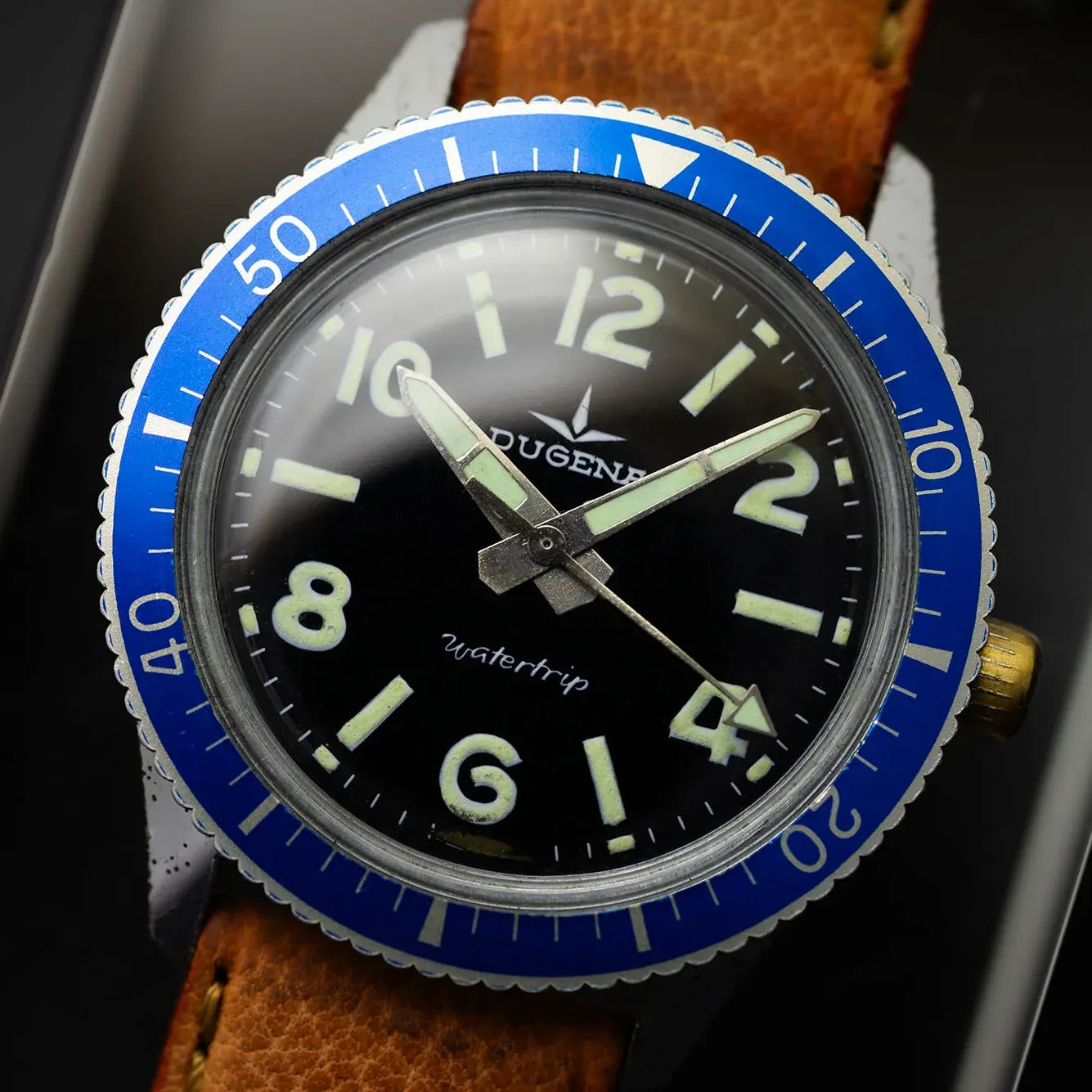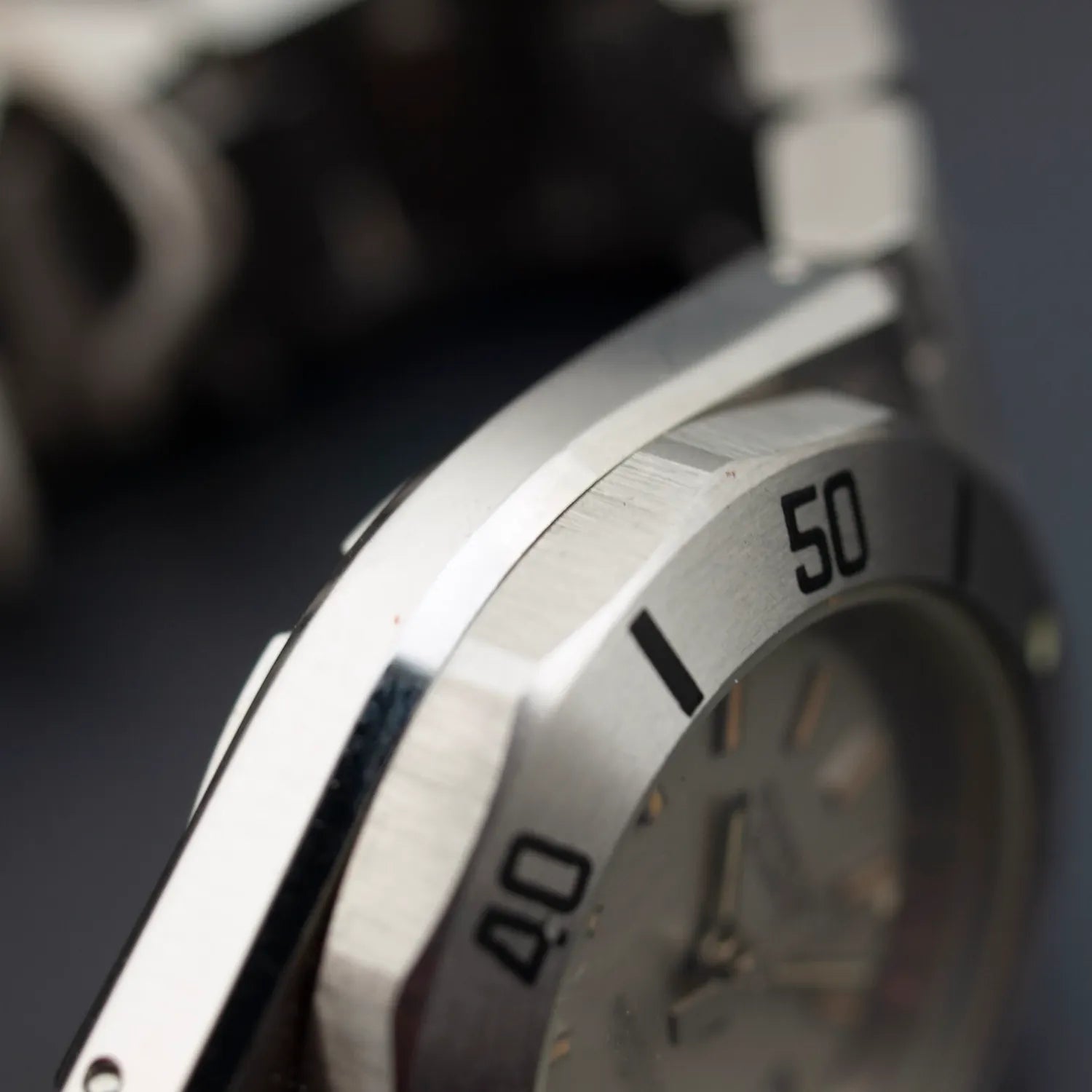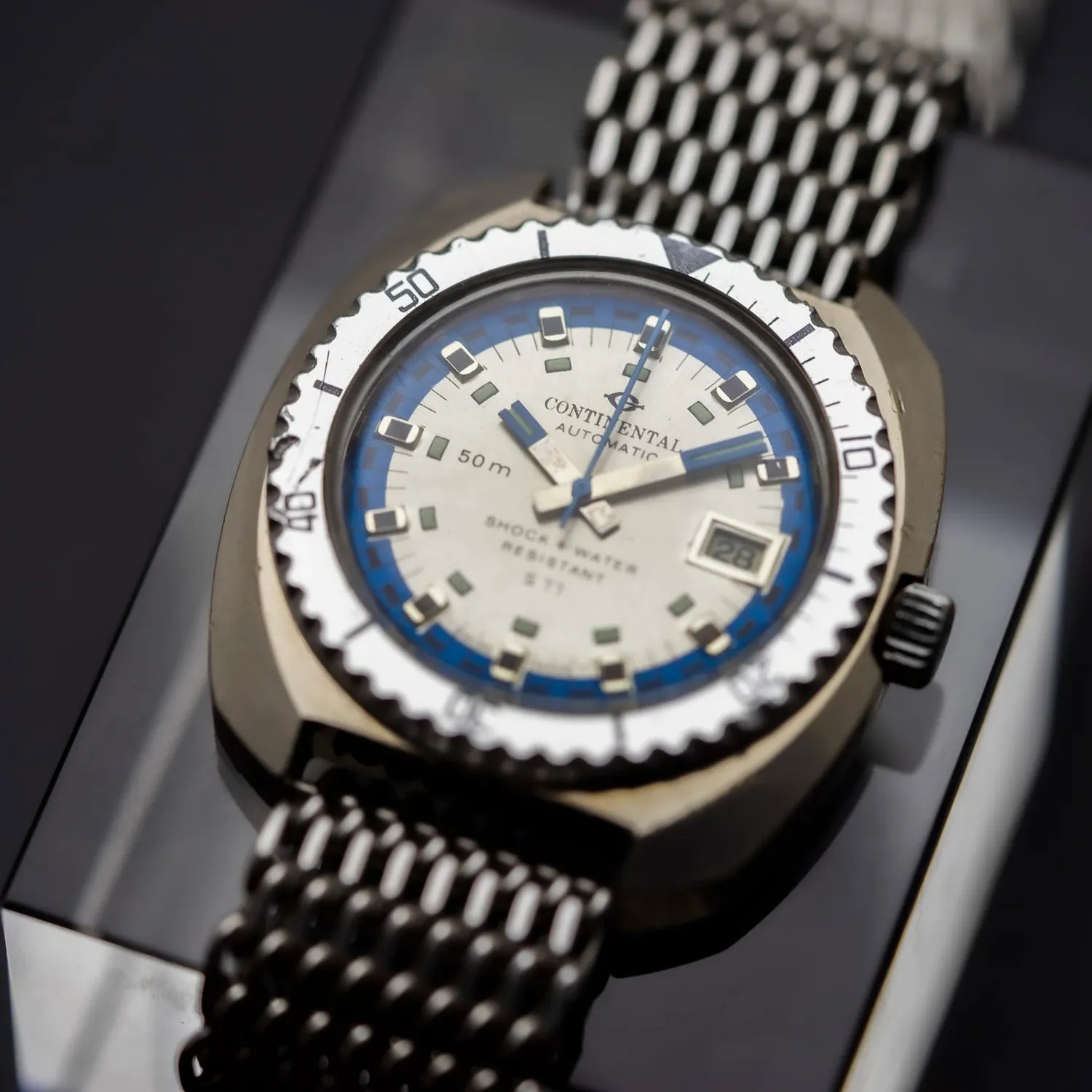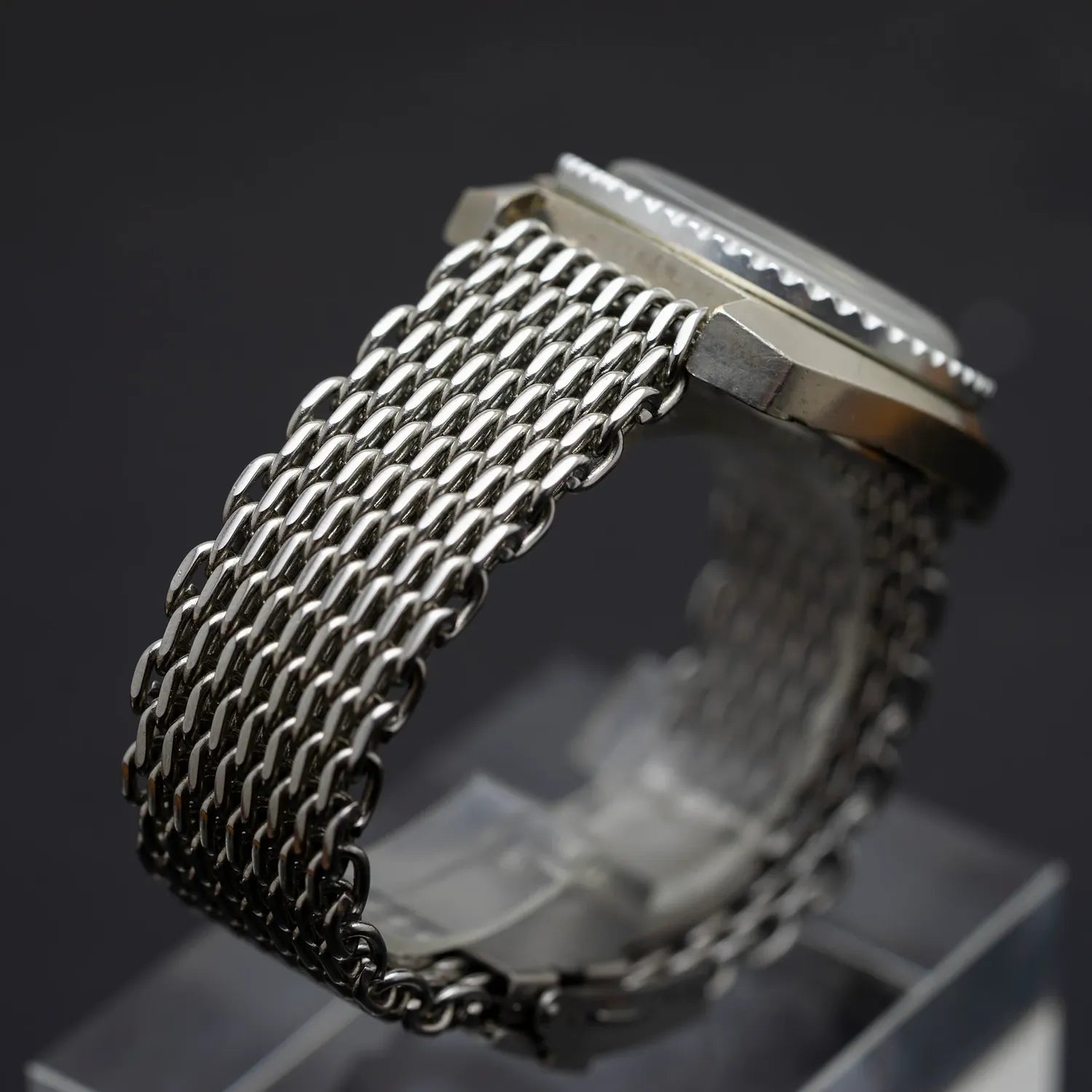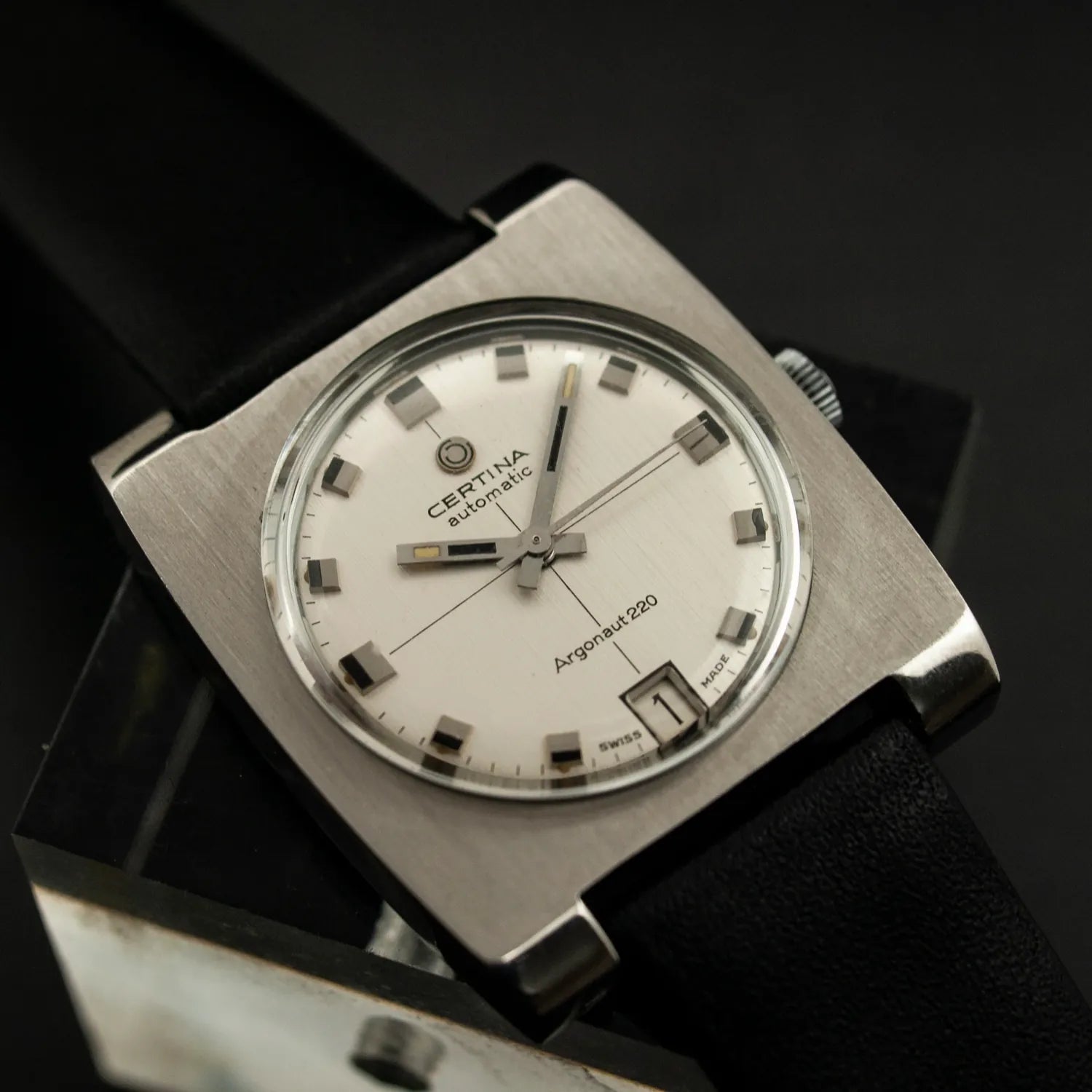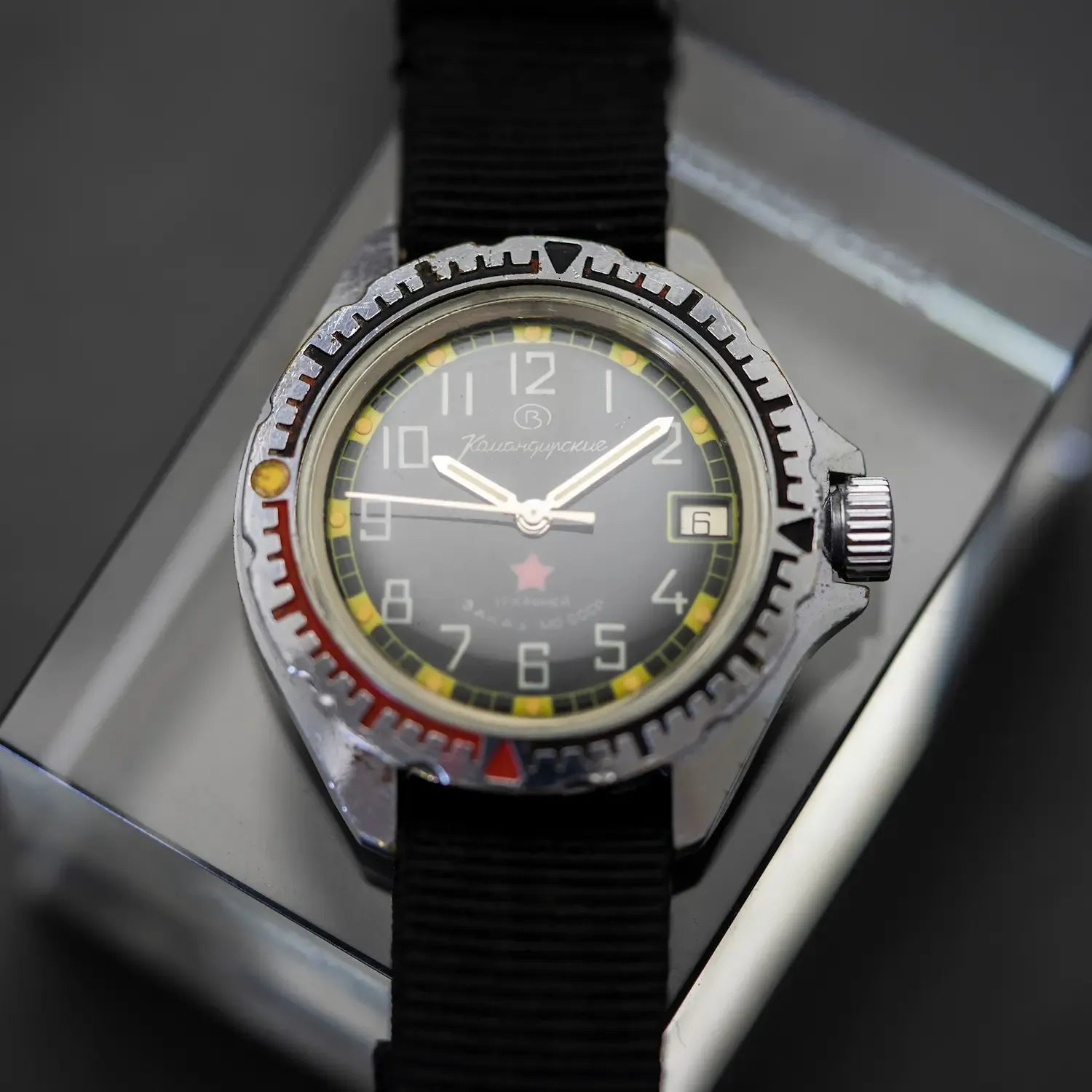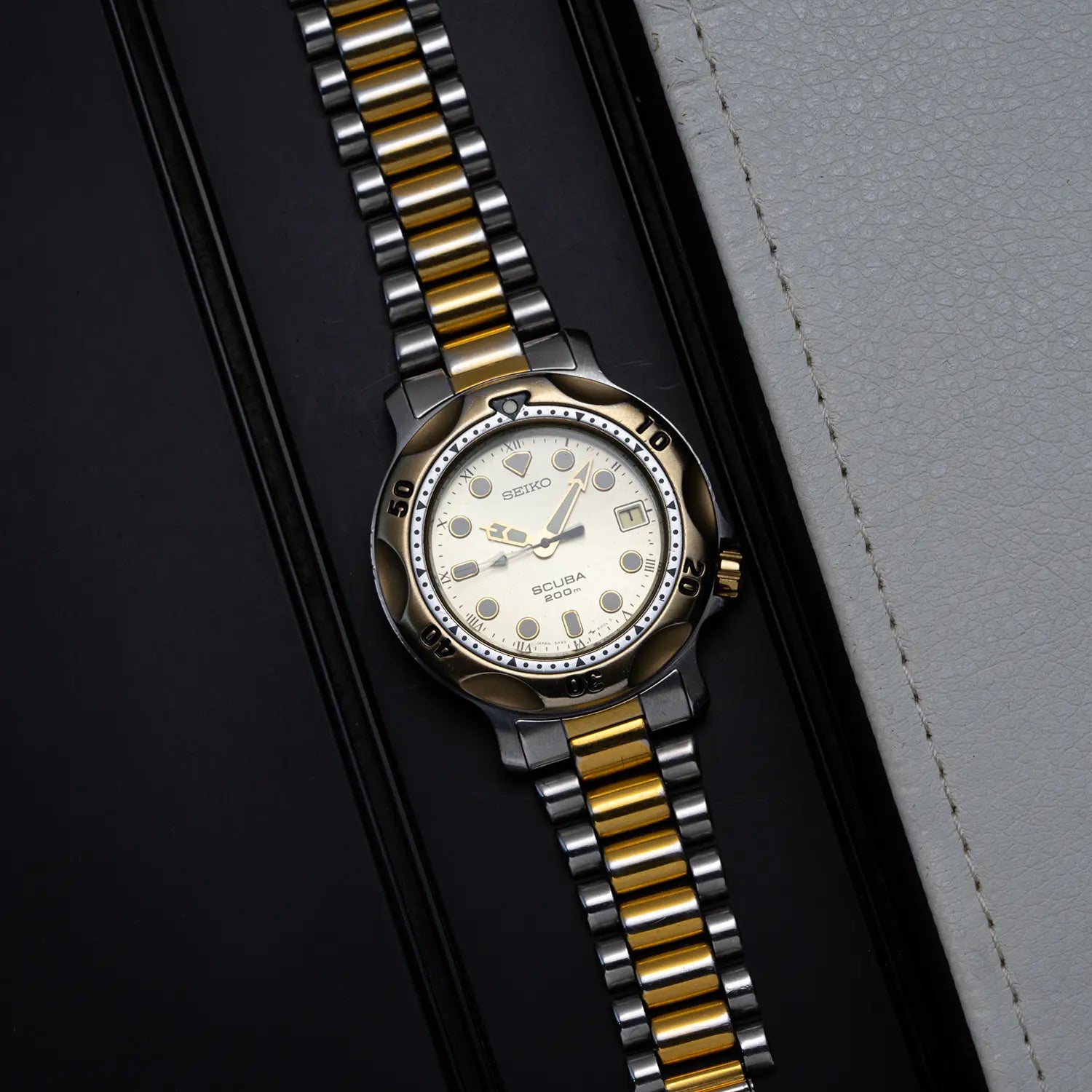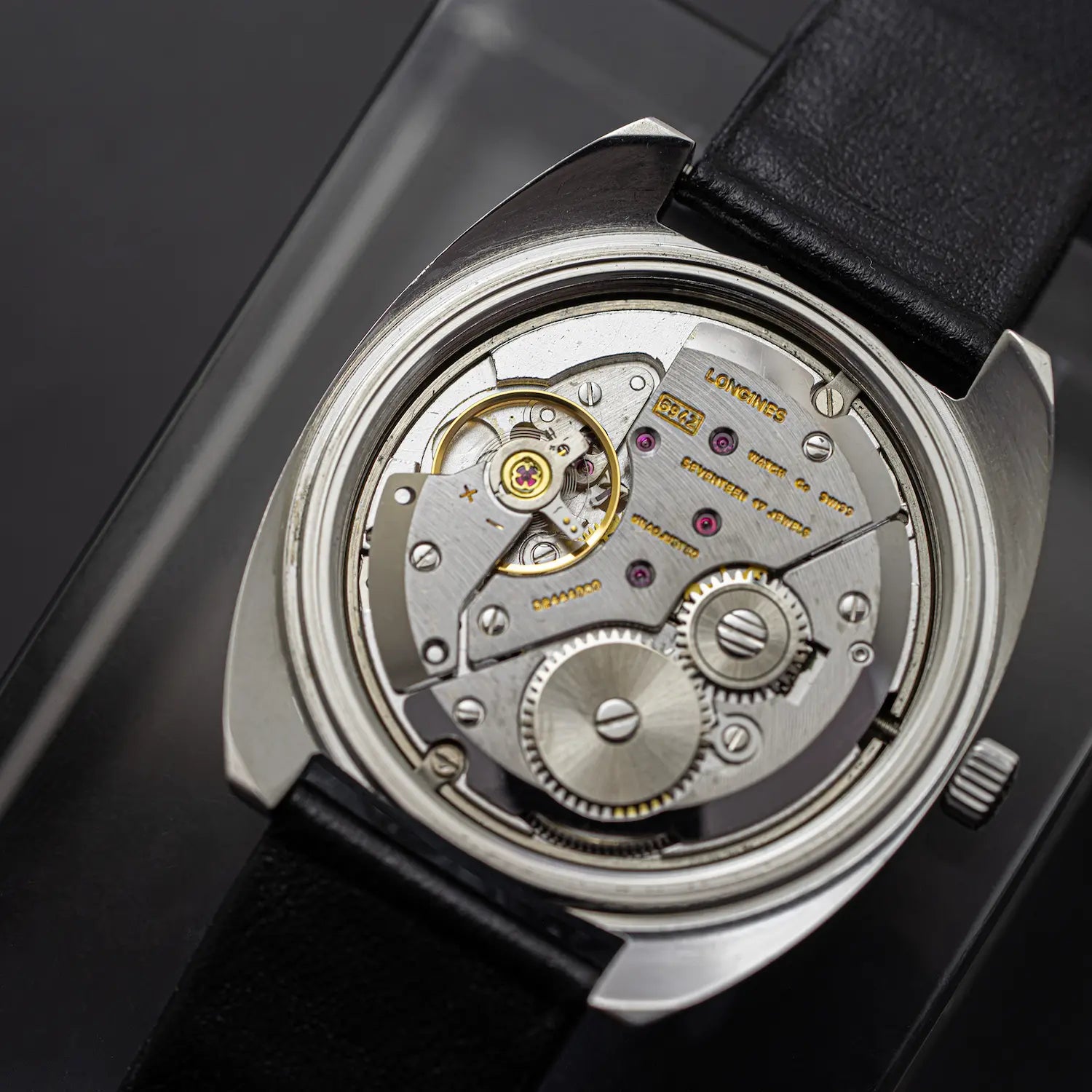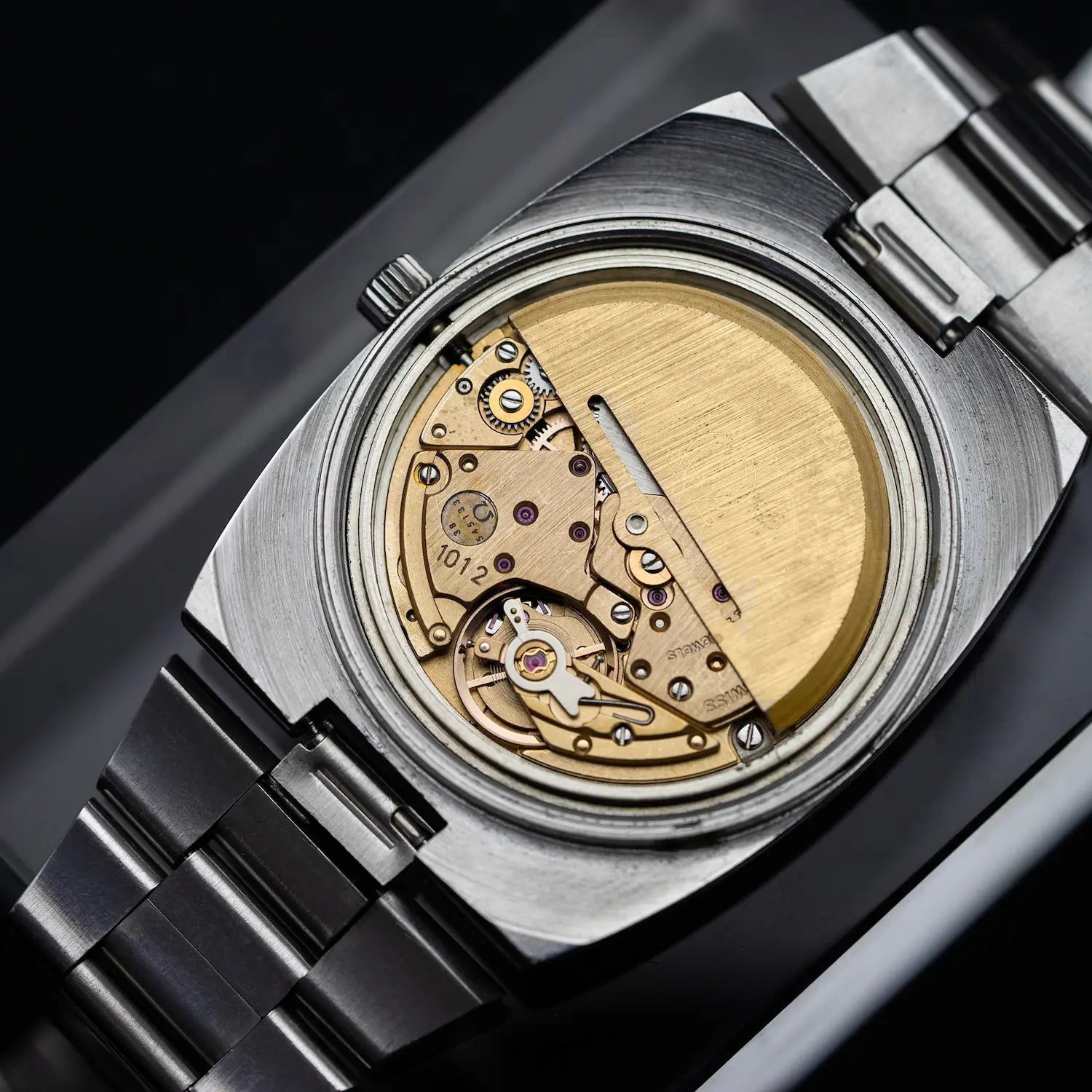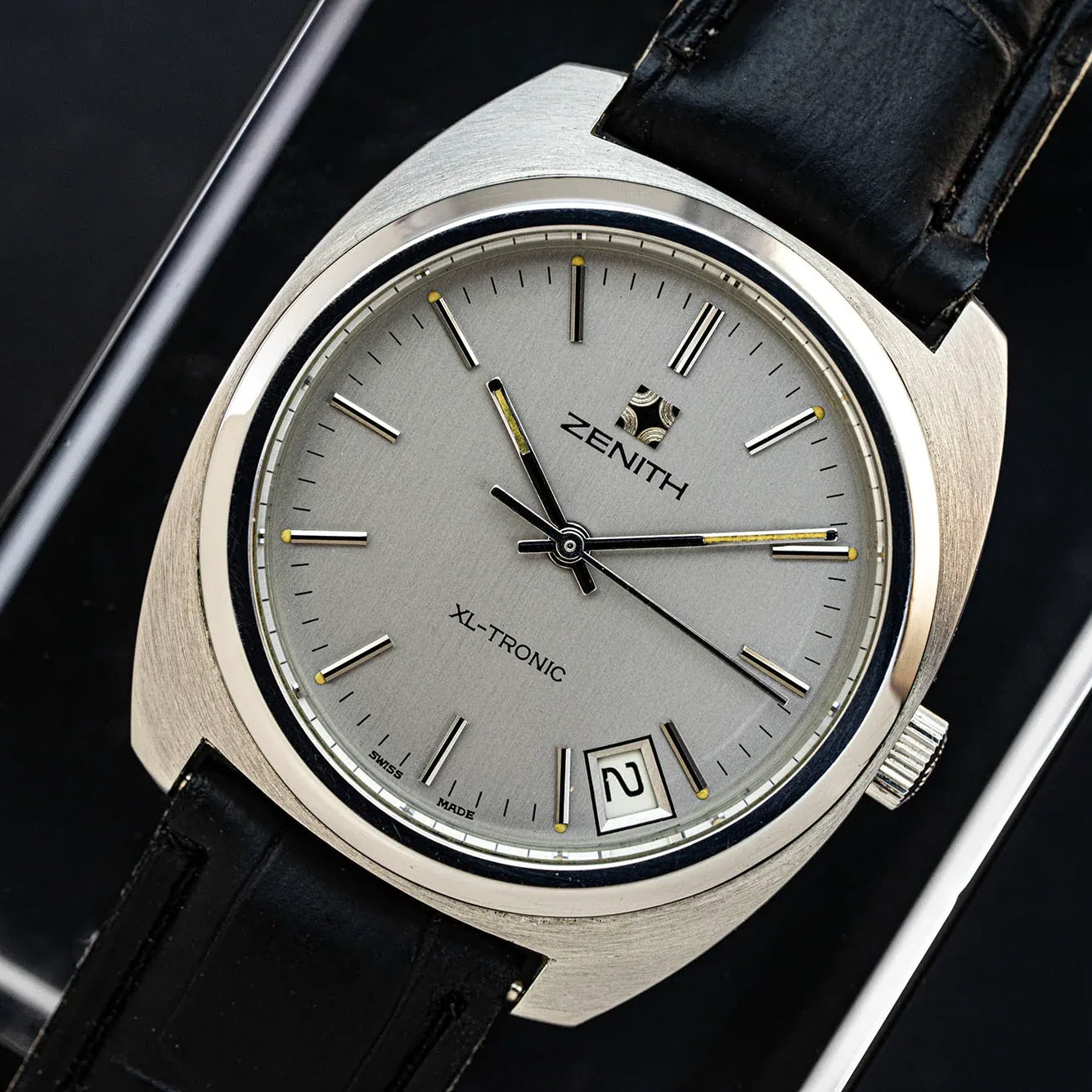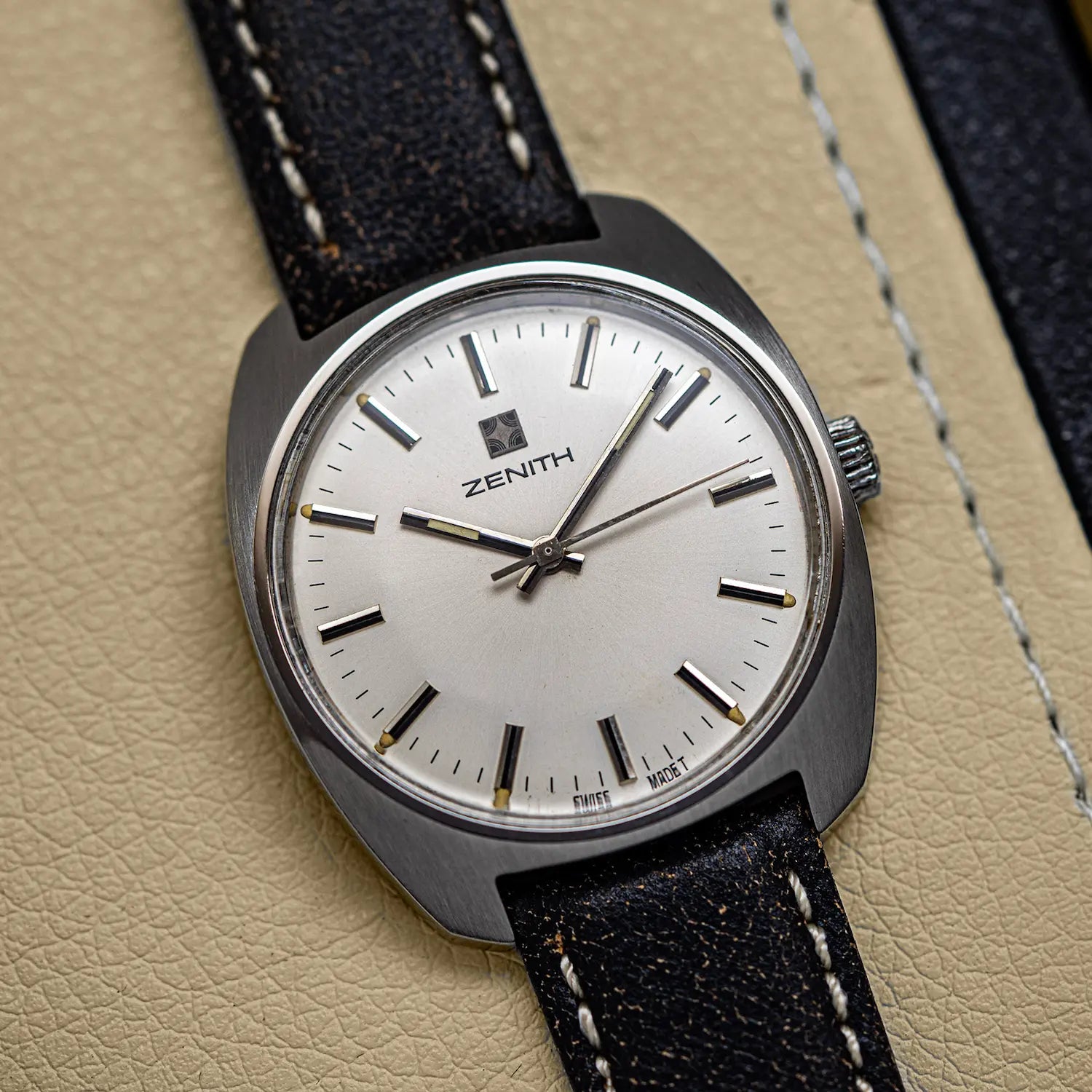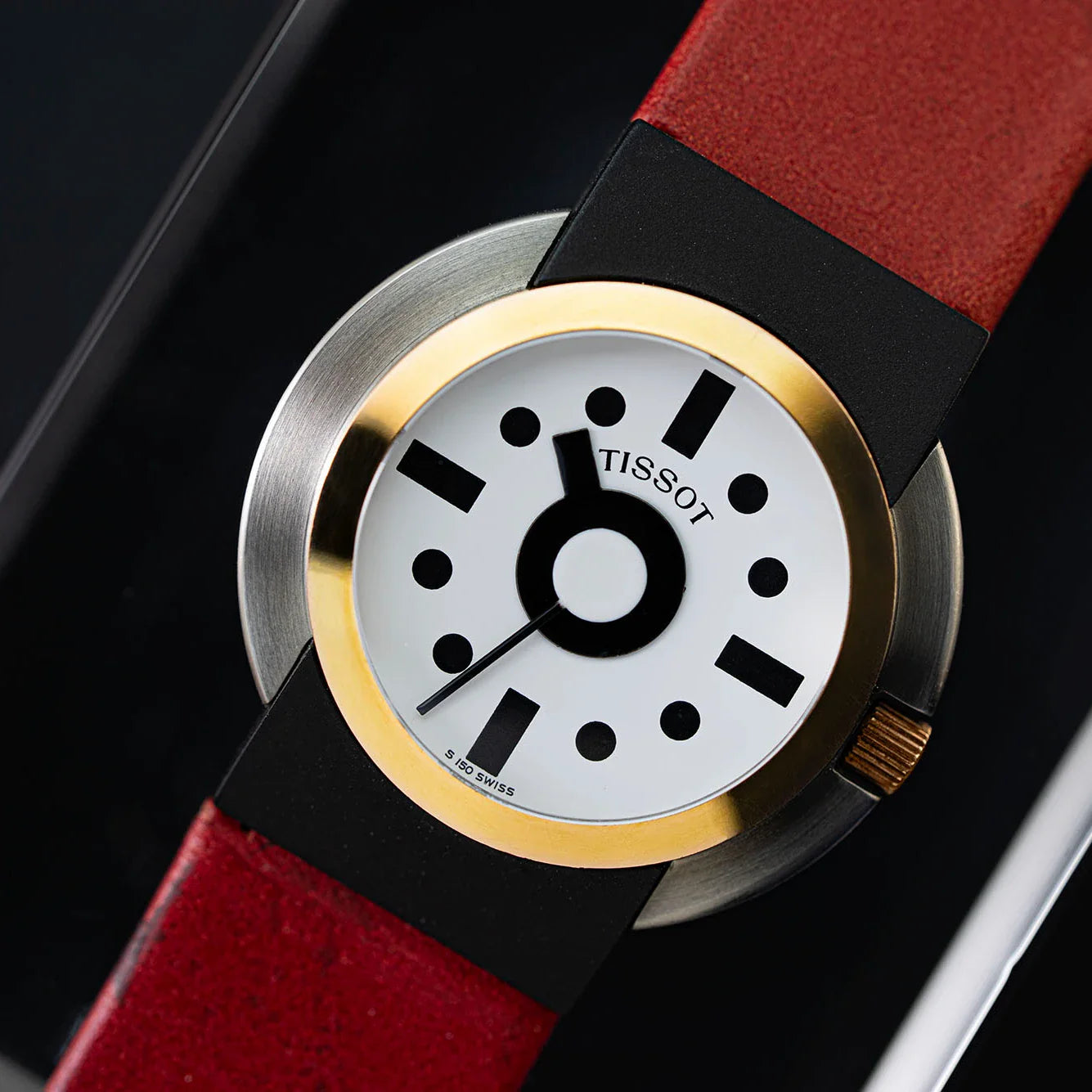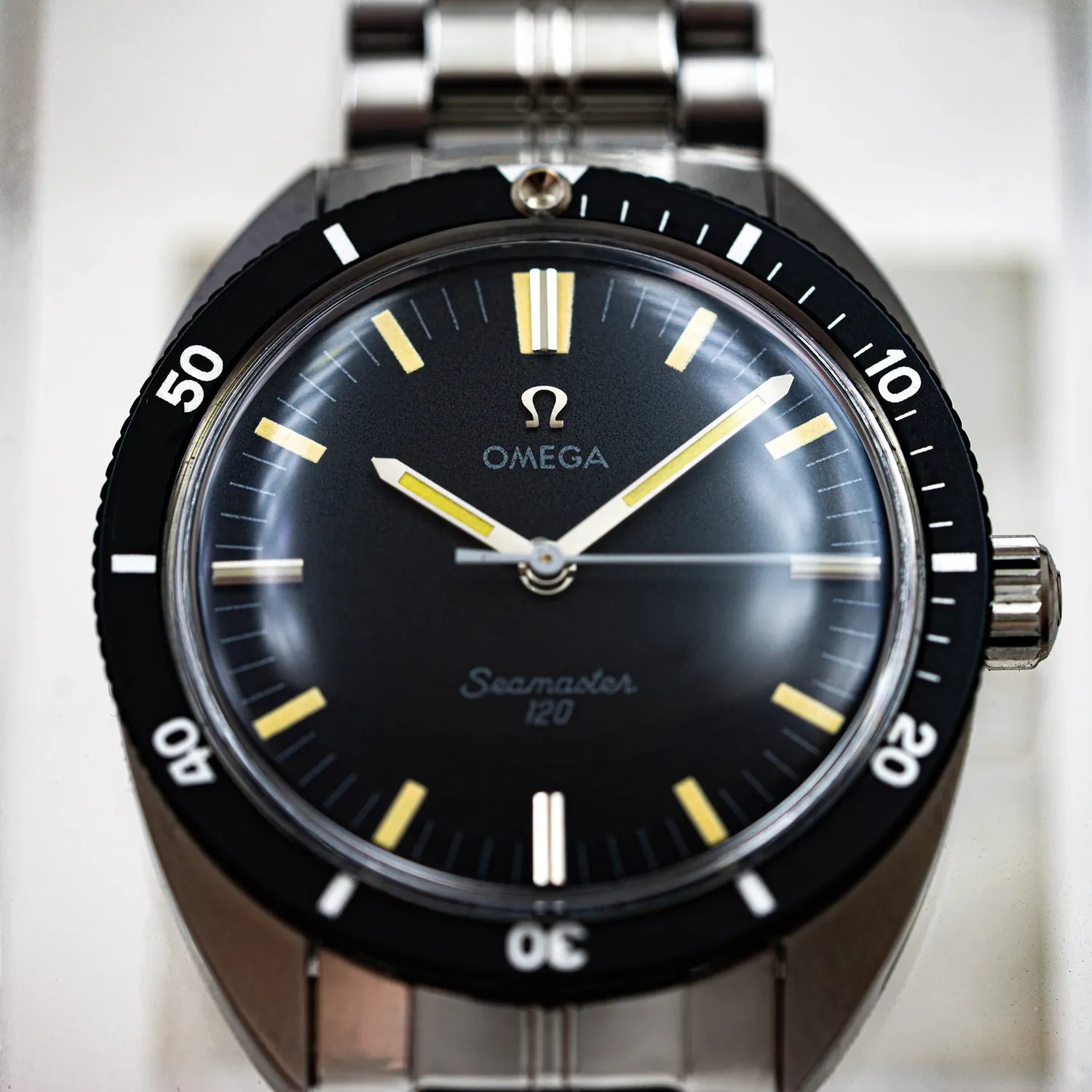Filters
Didn’t find the reference you had in mind? Explore our vintage watches — fully serviced with a 12-month warranty.
Water Resistance, Pressure Testing & Real-World Use
Dive-ready features matter: screw-down crowns, solid casebacks, and intact seals. We document water-resistance expectations for vintage use and provide pressure-test results when applicable, so you know exactly how each watch performs today. For everyday wear, avoid hot water and sudden temperature shifts, and rely on our clear service notes to decide when a watch is pool-safe or desk-diver only.
Bezels, Lume & Case Design from the 1960s–1990s
Explore period-correct rotating bezels with minute hashes, bi-directional or uni-directional actions, and patinated lume that tells a story. Cases range from slim 1960s skin-divers to chunkier 1970s–1990s tool profiles with crown guards. Expect stainless-steel builds, domed crystals, legible dials, and bracelets or Tropic-style straps—each listing notes bezel action, lume condition, case geometry, and estimated production years for confident selection.
Vintage Dive Watches – Frequently Asked Questions
Can I actually swim or dive with a vintage diver?
It’s best not to. Even if a watch was rated for diving decades ago, aging gaskets and tolerances mean water can still get in; many watchmakers advise keeping vintage pieces dry except for incidental splashes after a seal check. Modern “diver’s” ratings follow ISO 6425 (≥100 m WR, timing bezel, legibility tests), but most vintage watches won’t meet current standards unless freshly serviced and pressure-tested—and even then, risk remains.
What does a proper water-resistance (pressure) test involve for an older watch?
After inspection and any gasket/crystal replacement, a watchmaker uses a pressure-testing machine to verify the case seals; if it fails, the watch isn’t water-resistant and needs renewal or full service before re-testing. Passing a test today isn’t a permanent guarantee—water resistance must be re-checked periodically, especially on vintage pieces.
How often should a vintage dive watch be serviced, and what’s included?
A common guideline is a full service about every 4–6(–8) years depending on use. A true overhaul means complete disassembly and cleaning, replacement of worn parts and seals, lubrication, reassembly, regulation, and (when appropriate) pressure testing. Documented, recent servicing supports reliability and long-term value.
How do I verify authenticity and originality before buying a vintage diver online?
Match the reference and serial to the correct era, confirm the movement caliber for that reference, and scrutinize dial printing, bezel fonts/markers, hands, crown signatures, and caseback engravings. Review sharp movement and caseback photos and compare to trusted guides; be wary of “Franken” builds mixing parts. (Tip: even bezel font thickness and logo embossing quality can expose counterfeits.)

